Plan a trip to Portugal and you’ll learn that a lot of people have gone there recently. Destinations do sometimes simply get hot, and Portugal has the benefit of being relatively cheap. But the country stoked the fire by granting (a) residence visas to foreigners who invest in real estate and (b) naturalization to descendants of Sephardic Jews expelled in the 15th century. One day, feeling pessimistic about America’s political future, my husband, Adam, announced that our plan B would be to move to Portugal. I suggested that we see it first.
Also, six months ago, when Covid was still affecting travel, flights were extremely reasonable—why not go to Portugal? I guess Adam got overexcited because he booked the wrong dates, and by the time we realized the error, staying in Portugal for two weeks was more economical than changing the flights. All of which is to say that I have many more impressions than anyone would care to hear, so I’ll stick to the highlights and yet this will still run long.
We started in Lisbon, staying at Santa Clara 1728, part of the Silent Living group. It’s an 18th-century building that an airline pilot turned into a six-suite hotel, reserving the top floor for himself and his family. The whole place is both high-style and minimal, and the staff was unfailingly friendly and helpful. The only significant caveats: 1) the lighting in the bathroom is meager—the two fixtures visible in the photo are the only ones that illuminate the vanity; 2) our room was just below the owners’ place, and we could hear their kids running to and fro—so if silent living is going to be more than a goal, the floors need rugs.
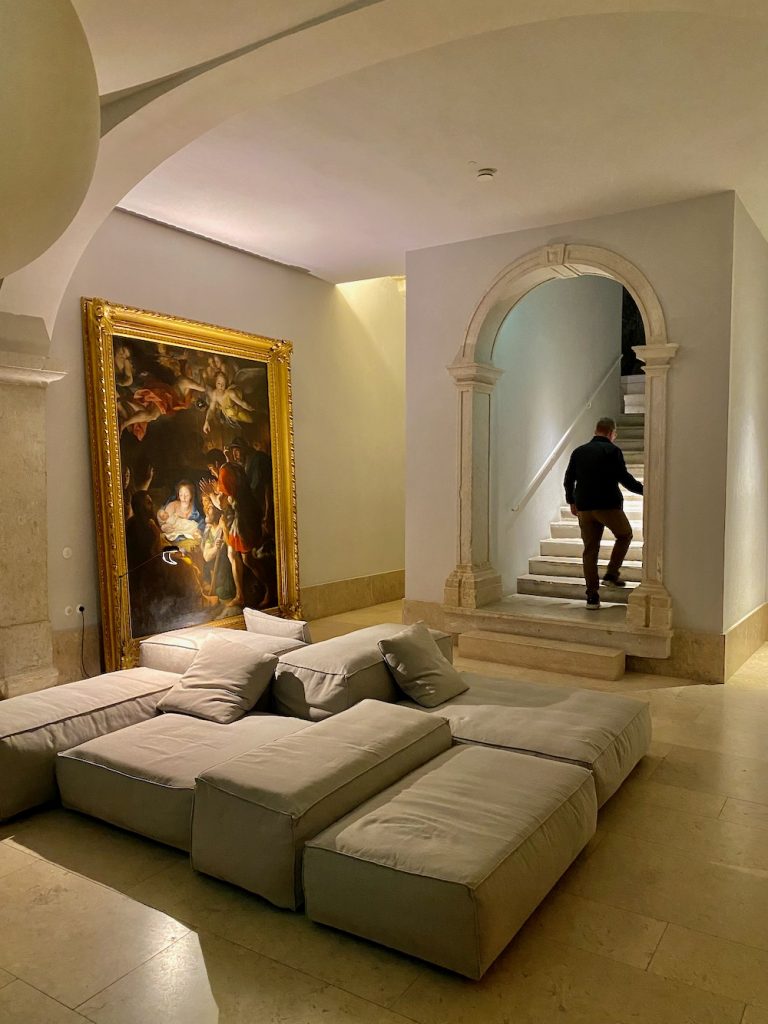
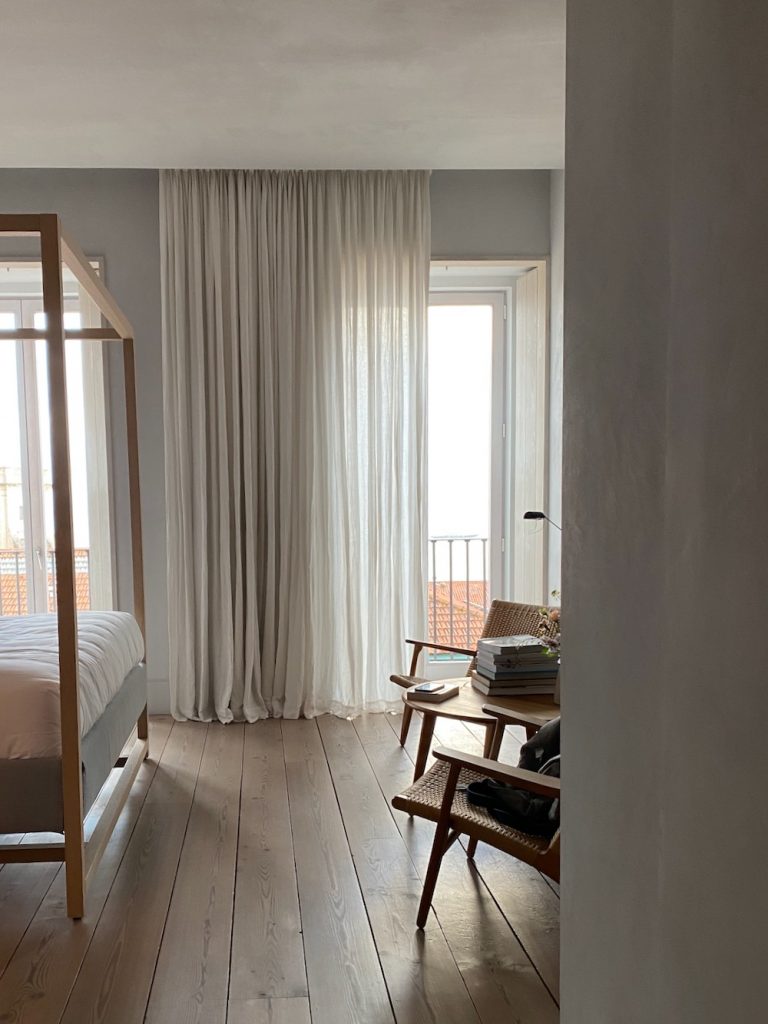
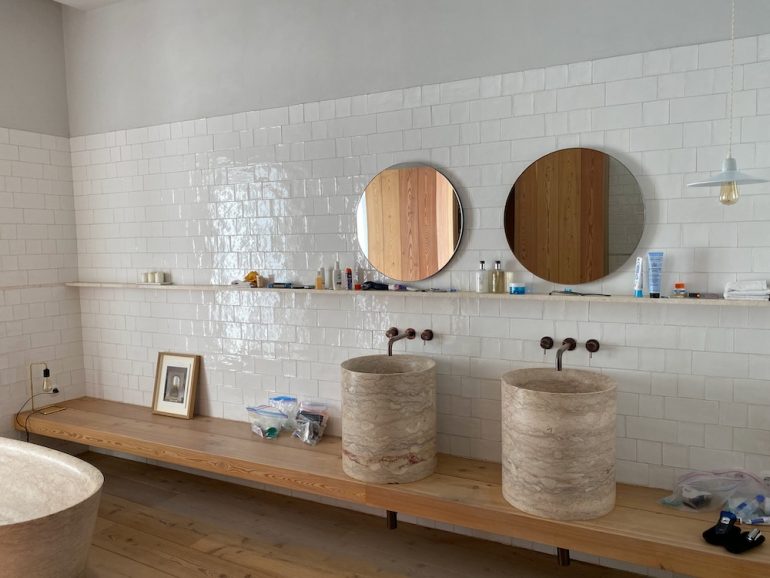 Lisbon is a rewarding walking city, with more patina—if we’re choosing the nice word—than you might expect from a Western European capital. And it has many very narrow streets, which people often drive on even when you think there can’t possibly be room.
Lisbon is a rewarding walking city, with more patina—if we’re choosing the nice word—than you might expect from a Western European capital. And it has many very narrow streets, which people often drive on even when you think there can’t possibly be room.
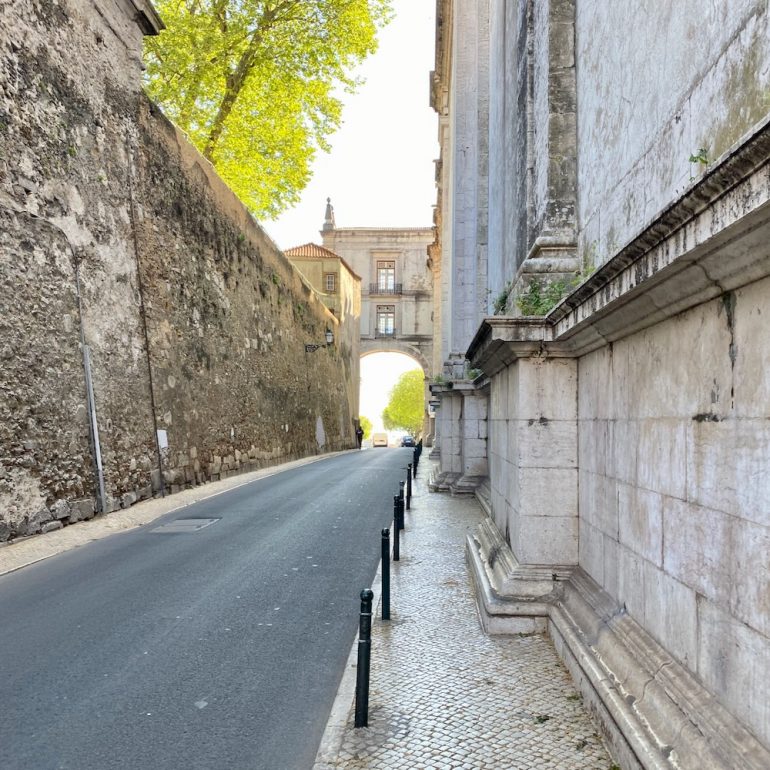
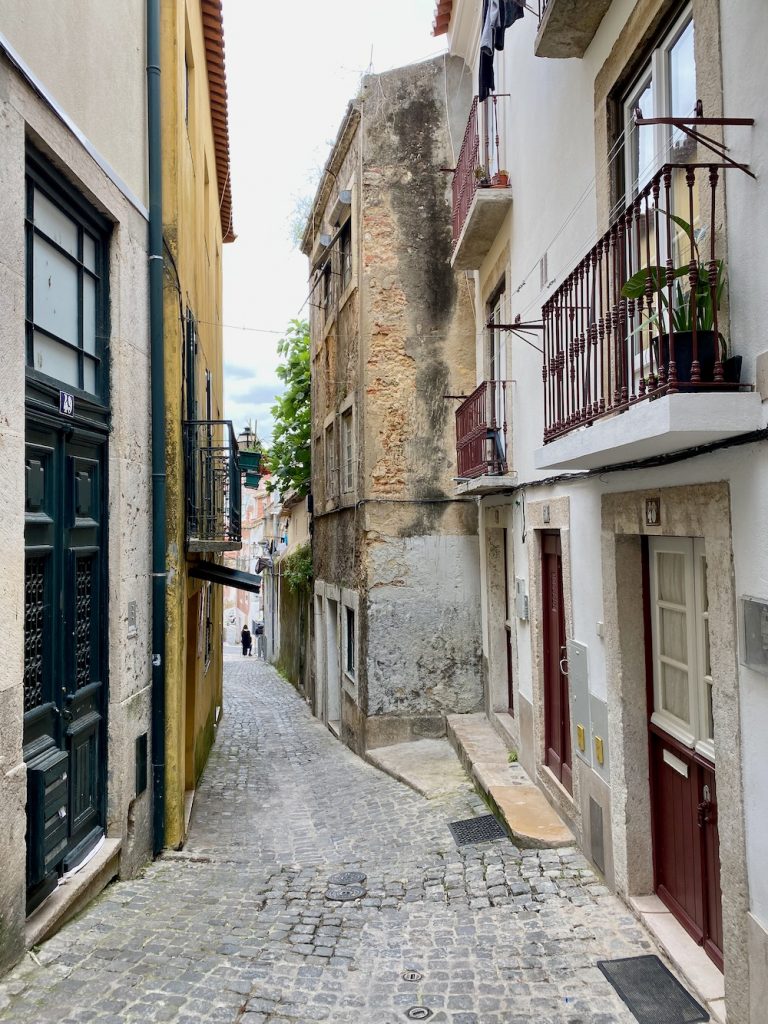
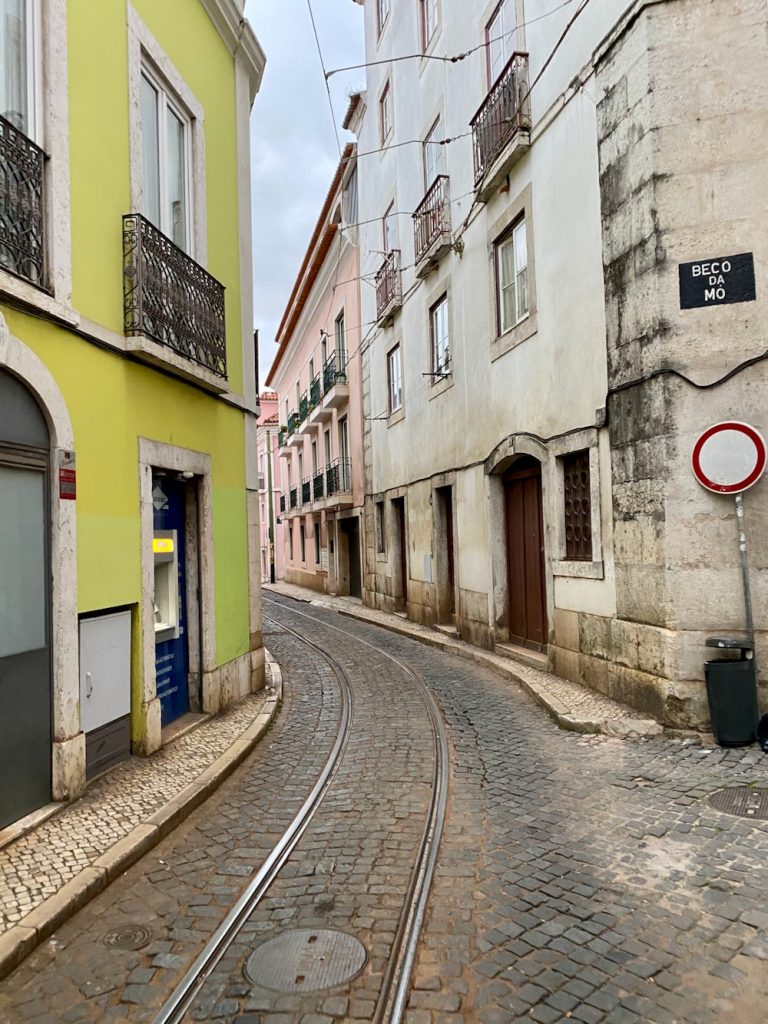 The city is also extremely hilly, with a lot of stair-streets and, if you’re lucky, an outdoor escalator.
The city is also extremely hilly, with a lot of stair-streets and, if you’re lucky, an outdoor escalator.
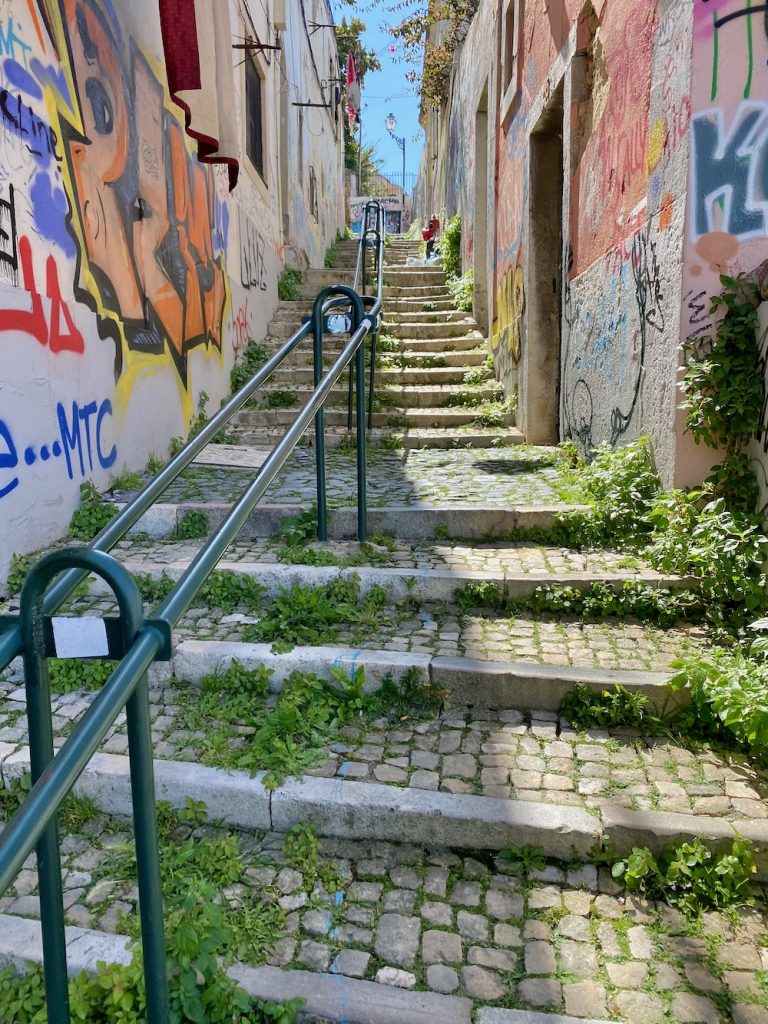
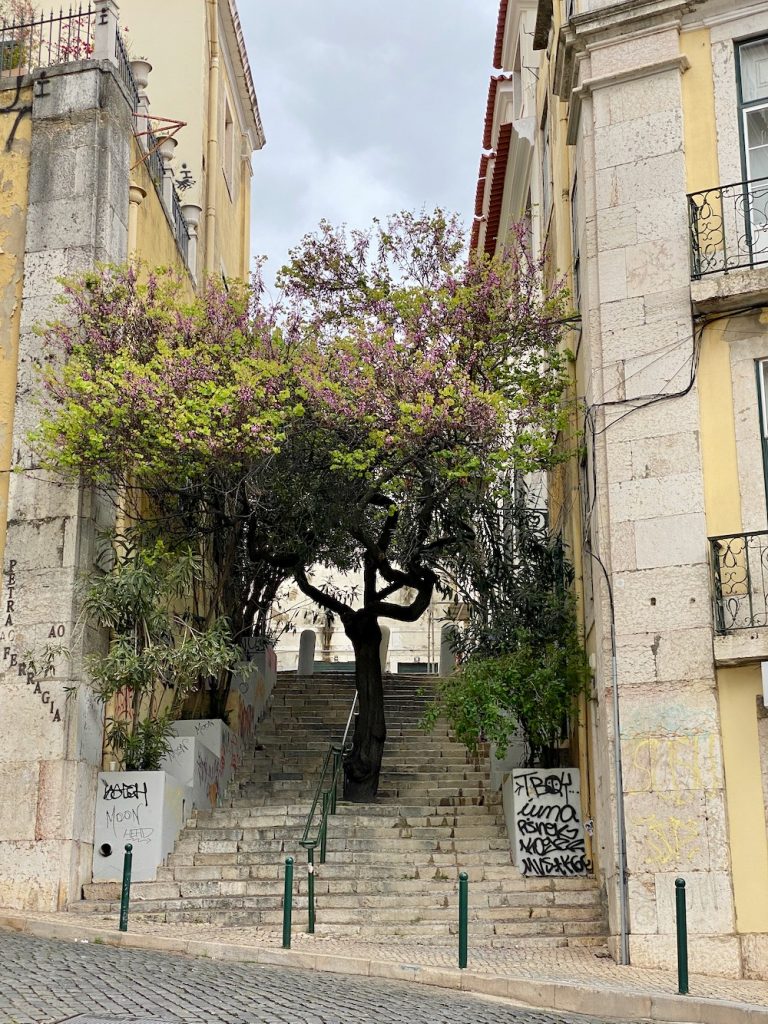
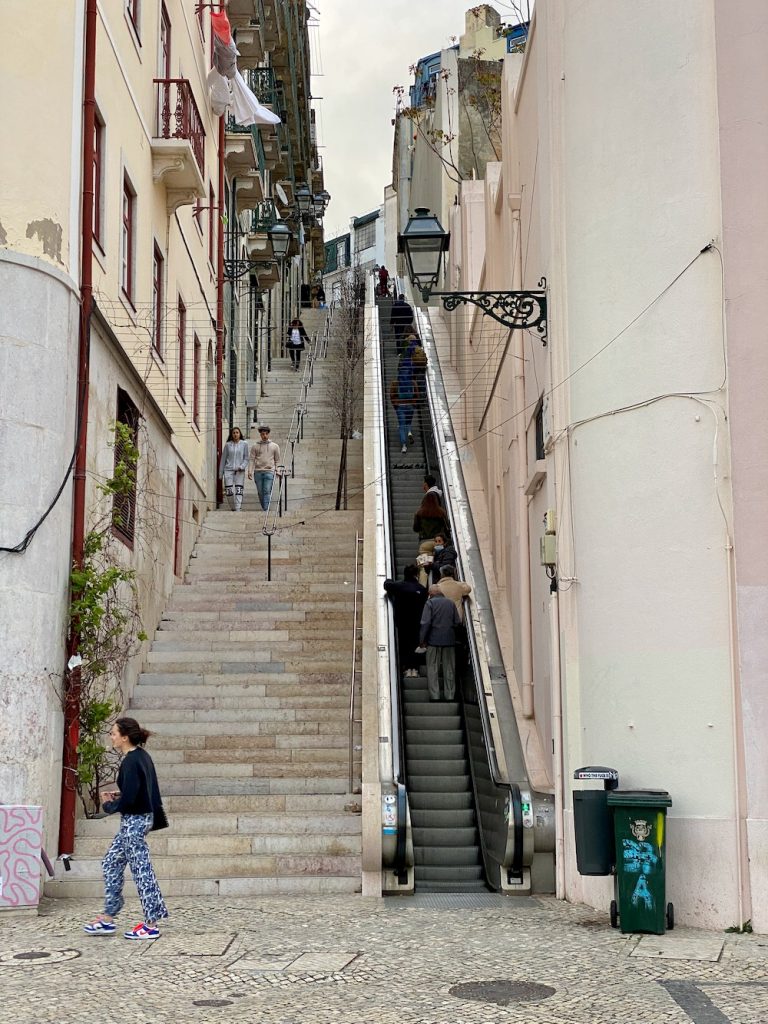 If you know one thing about Lisbon, it’s that many of the buildings are covered in tile. As much as I loved the tile, the calçada sidewalks and plazas excited me more, even when the stones were all white. If trypophobia is an aversion to irregular patterns, I’m a trypophile.
If you know one thing about Lisbon, it’s that many of the buildings are covered in tile. As much as I loved the tile, the calçada sidewalks and plazas excited me more, even when the stones were all white. If trypophobia is an aversion to irregular patterns, I’m a trypophile.
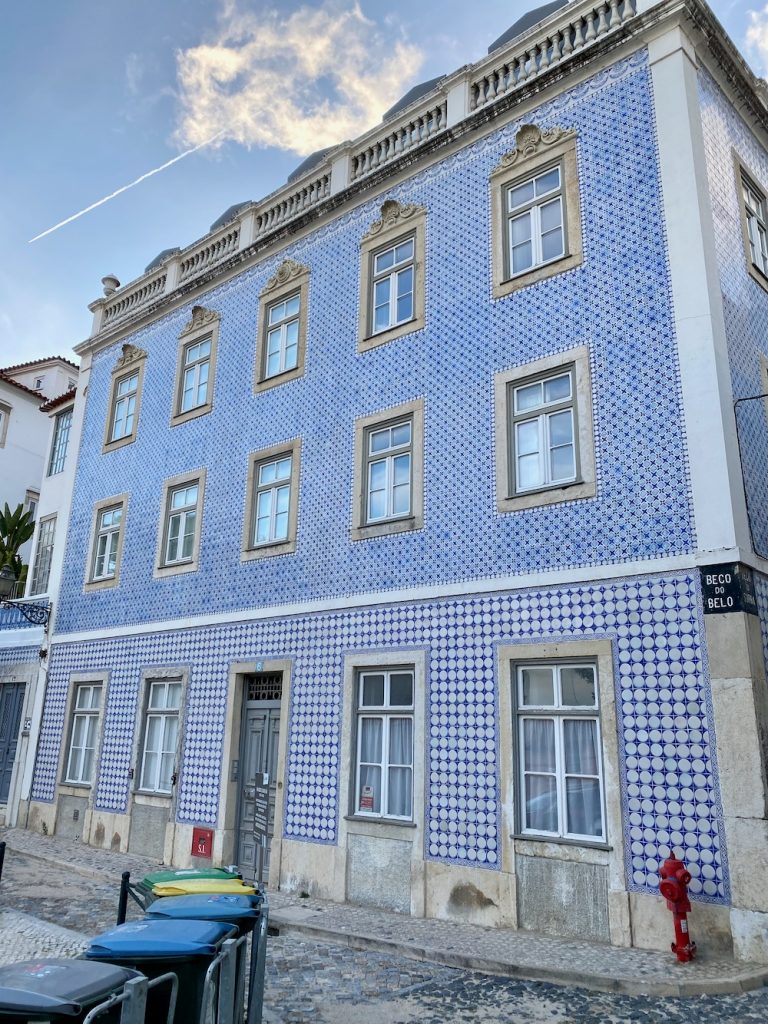
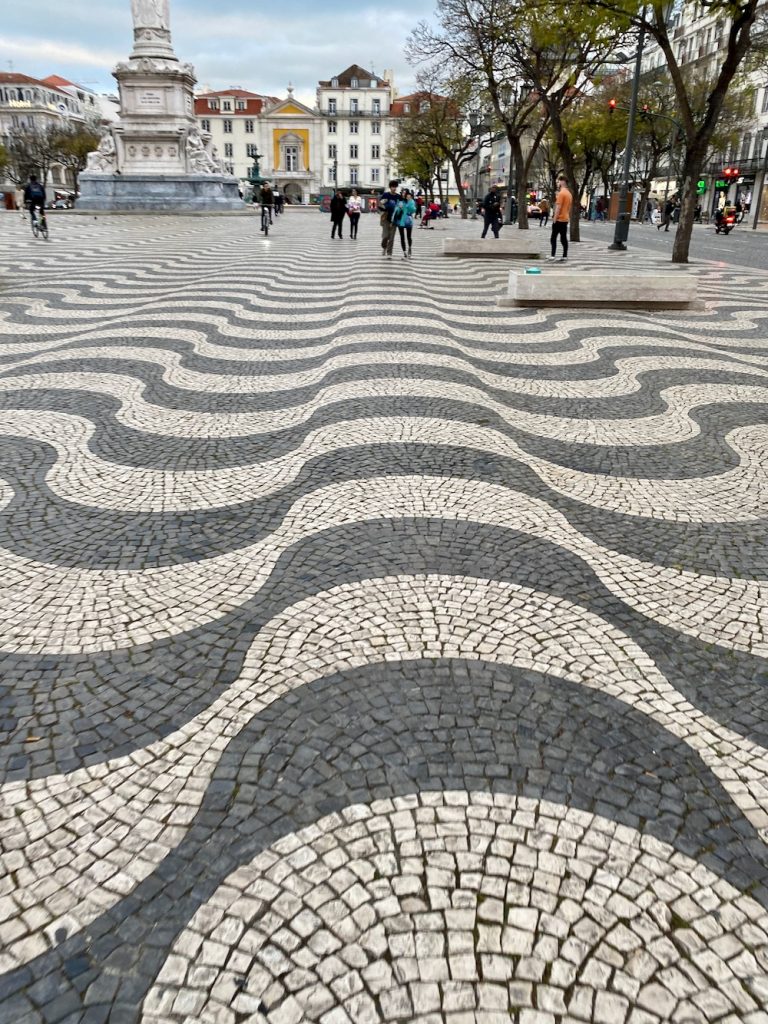
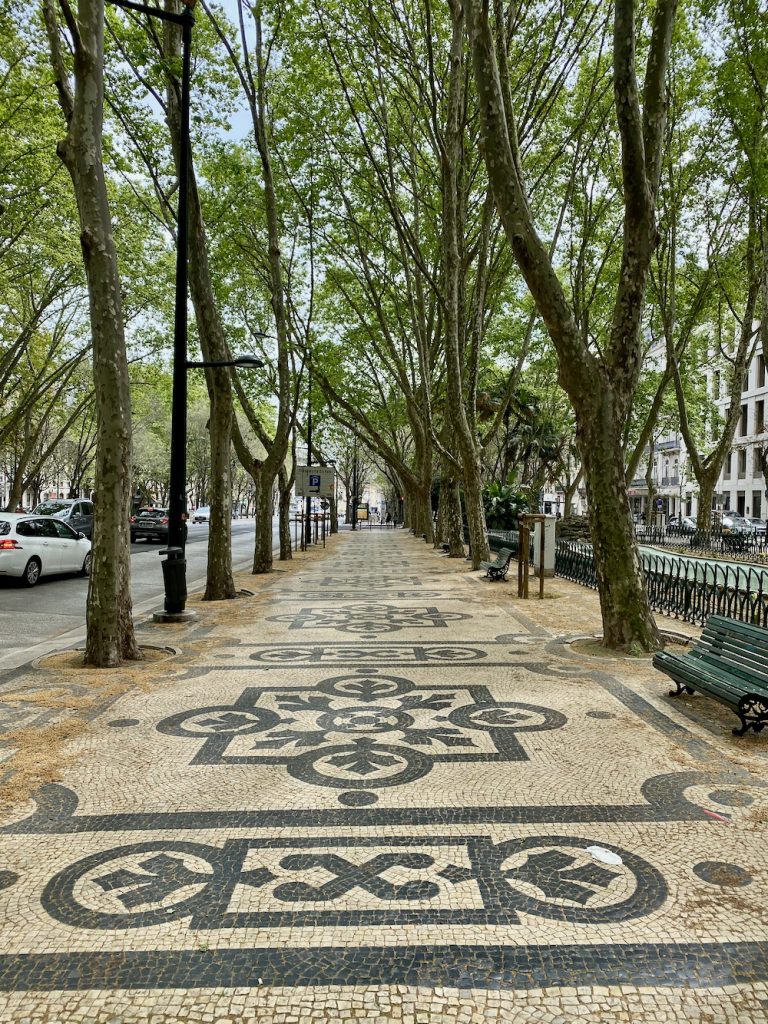 I normally skip churches, but I was glad I didn’t.
I normally skip churches, but I was glad I didn’t.
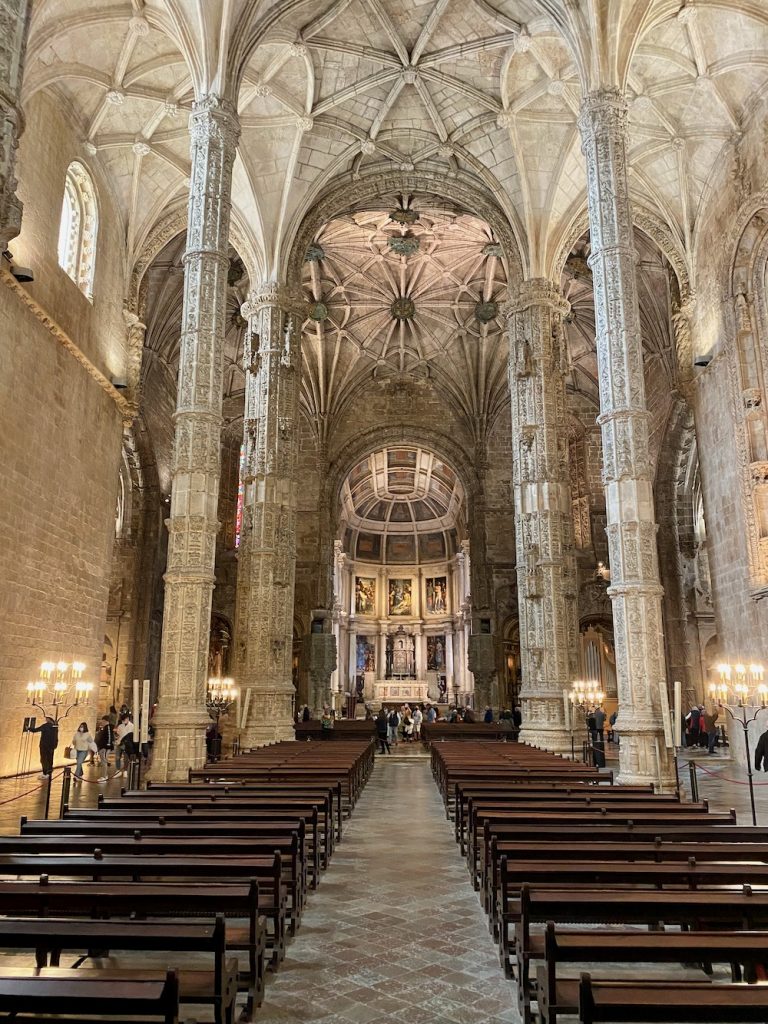
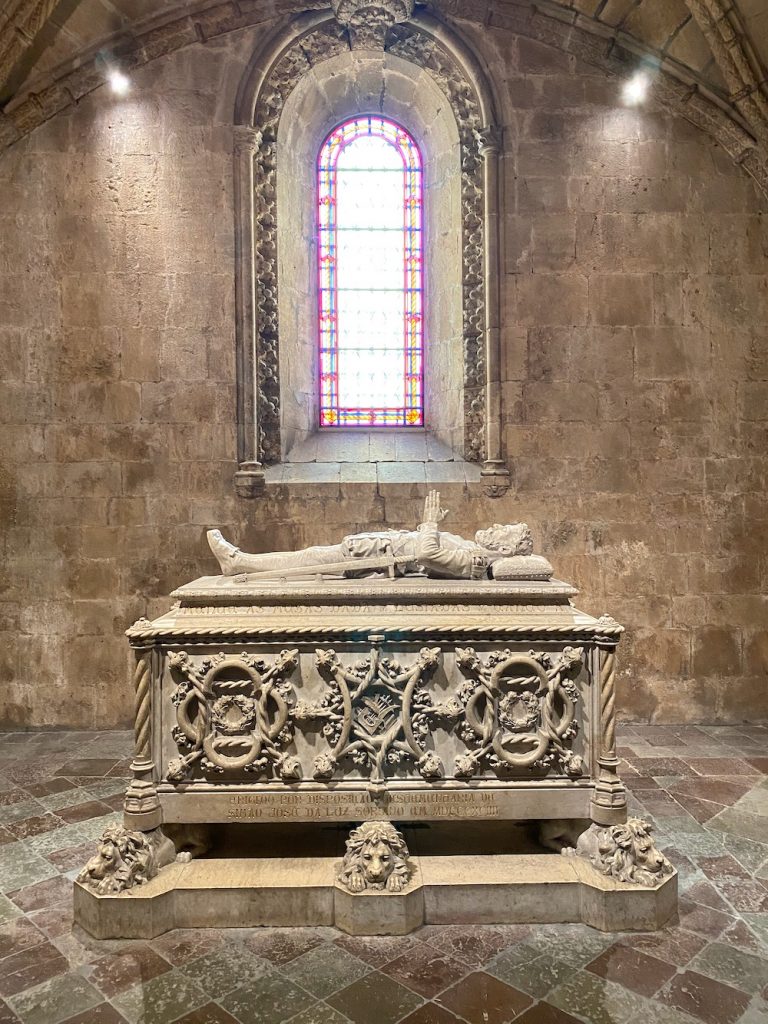 Ruined by the 1755 earthquake that devastated almost all of the city, the Carmo Convent is now part of the Carmo Archaeological Museum. What a place for a party!
Ruined by the 1755 earthquake that devastated almost all of the city, the Carmo Convent is now part of the Carmo Archaeological Museum. What a place for a party!
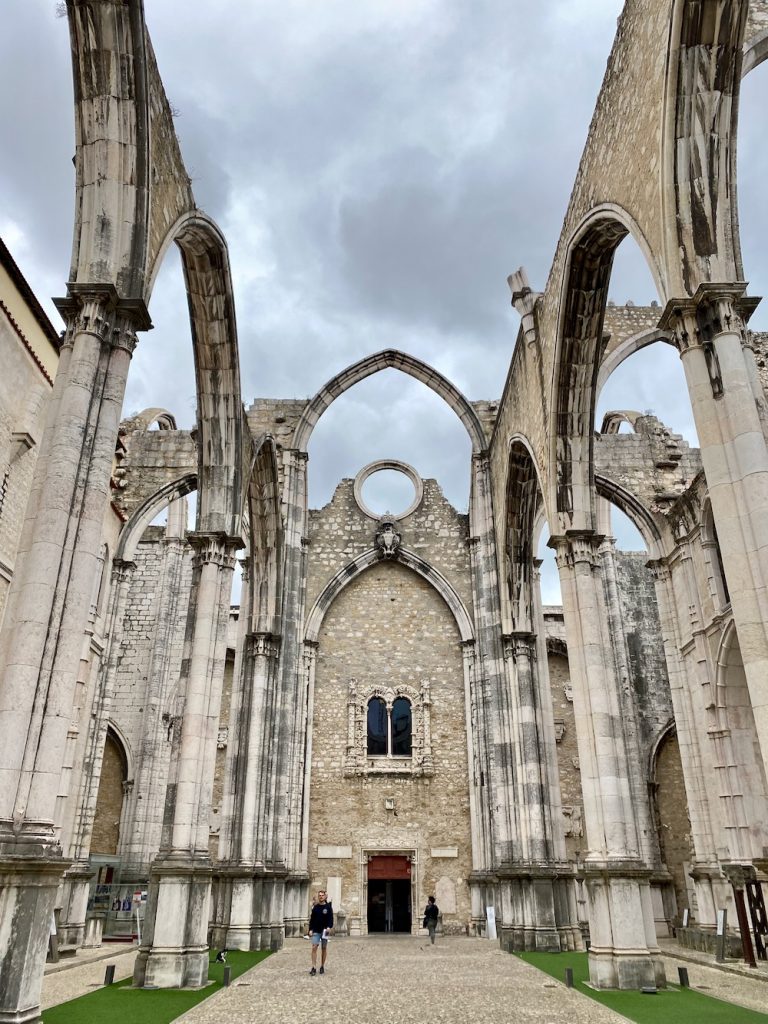 At the National Pantheon, formerly the Church of Santa Engrácia, you can stroll the catwalk around the dome and then go out to a large terrace for 360-degree views.
At the National Pantheon, formerly the Church of Santa Engrácia, you can stroll the catwalk around the dome and then go out to a large terrace for 360-degree views.
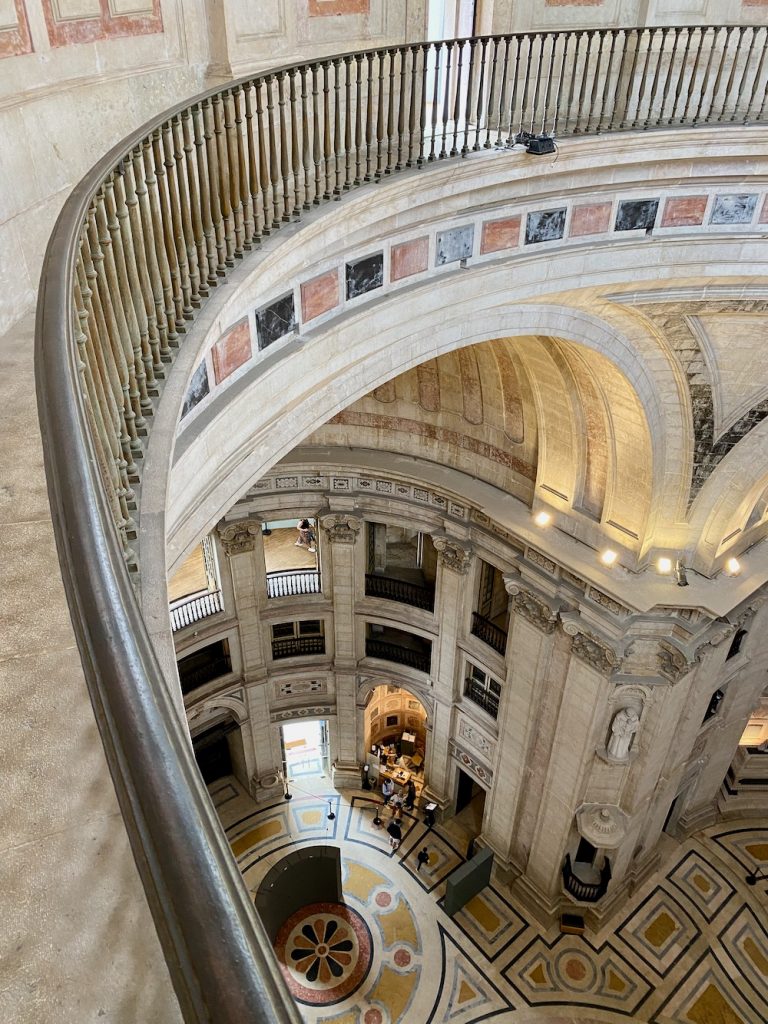 We’re not big souvenir people, but we found hard to resist the many stores devoted to tinned seafood (primarily sardines). And I continued my potato chip safari—taking photos of interesting flavors, not eating them.
We’re not big souvenir people, but we found hard to resist the many stores devoted to tinned seafood (primarily sardines). And I continued my potato chip safari—taking photos of interesting flavors, not eating them.

 What made the most impression on me in Lisbon was the way past and present live together in a way that feels more organic, and less touristy, than in, say, Rome. The city is old and lived-in, but it’s not stuck in amber, preserved to a high gleam for the sake of visitors. (In the second photo below, the art across the top of the building is etched into the building.)
What made the most impression on me in Lisbon was the way past and present live together in a way that feels more organic, and less touristy, than in, say, Rome. The city is old and lived-in, but it’s not stuck in amber, preserved to a high gleam for the sake of visitors. (In the second photo below, the art across the top of the building is etched into the building.)
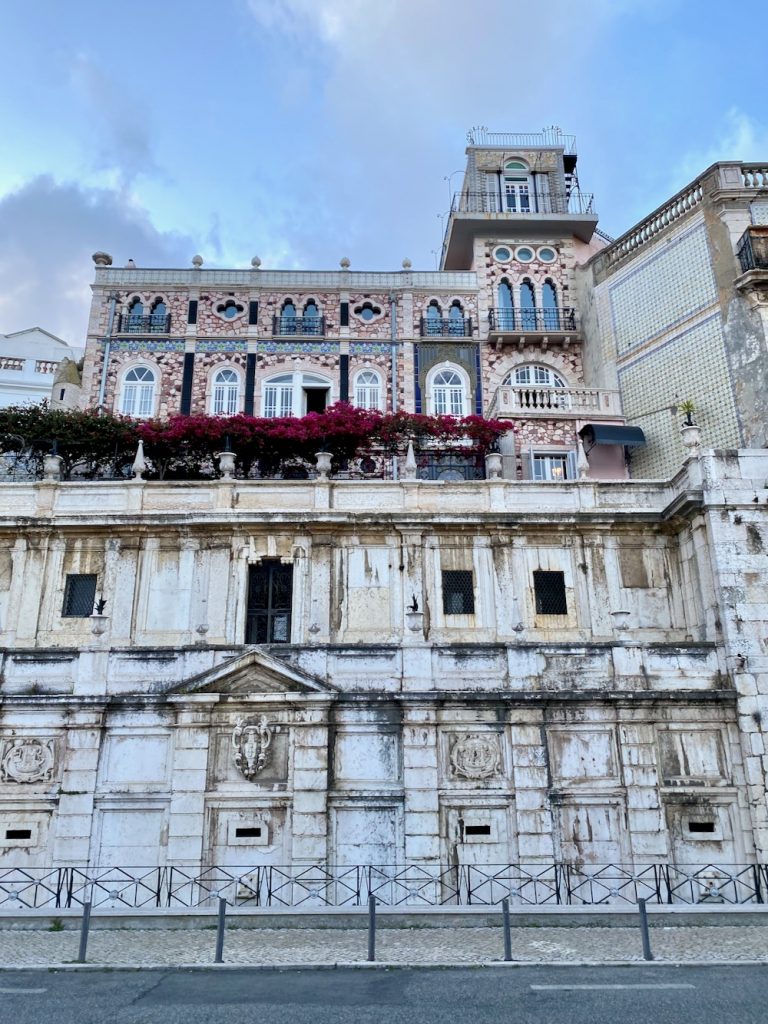
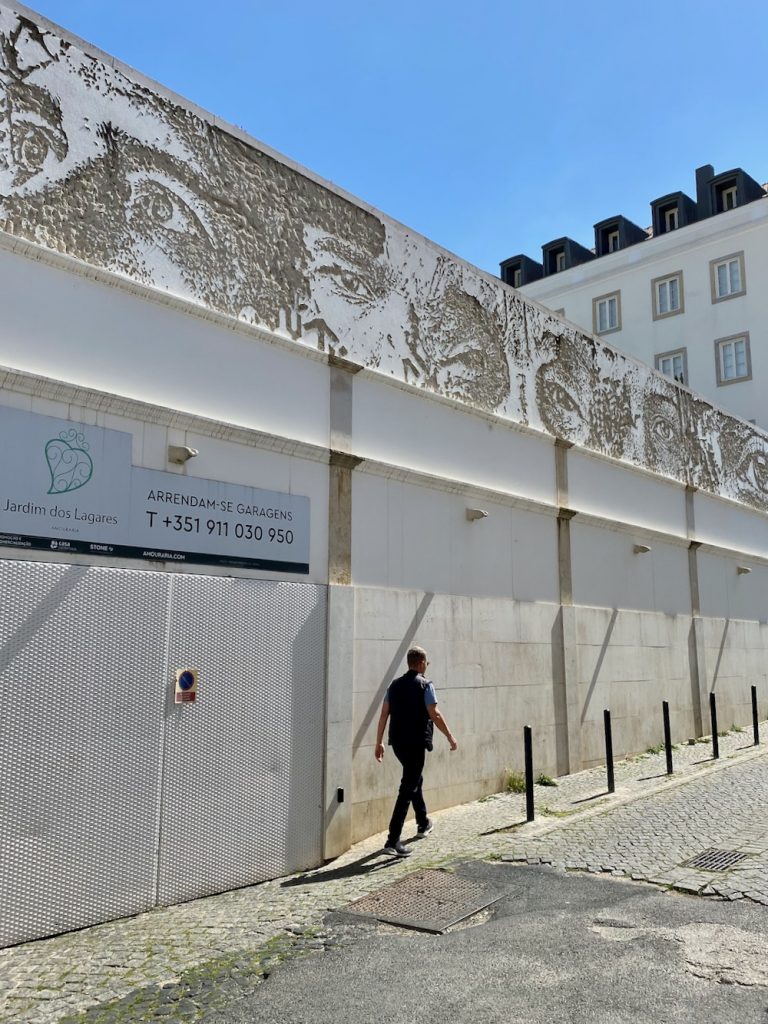
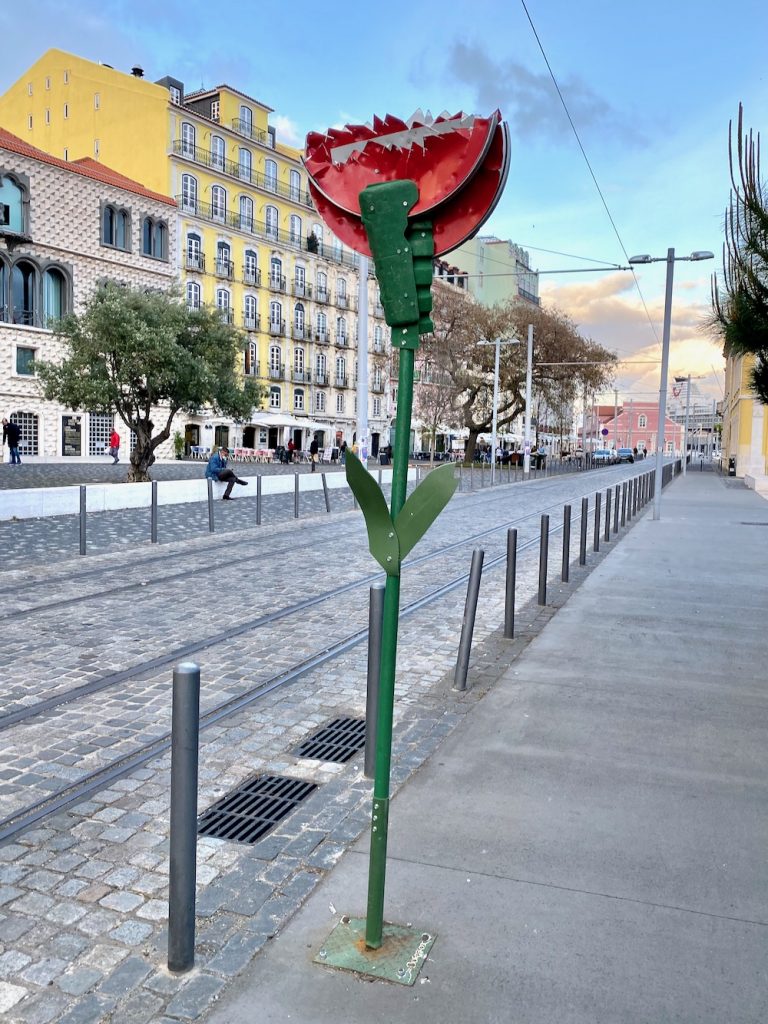 Next stop: the Algarve, along the southern coast. Portuguese drivers are insane—they might go well below the speed limit or far above it. And if they want you to let them pass, they come right up your bumper and hover a bit to the left, making it harder to see them. Anyway, taking the Santa Clara 1728 staff’s advice, we found a no-frills seafood restaurant overlooking the beach, A Ilha. And continuing on, we were delighted by the large seabirds nesting atop electric poles and the smaller birds that seem to nest inside those nests.
Next stop: the Algarve, along the southern coast. Portuguese drivers are insane—they might go well below the speed limit or far above it. And if they want you to let them pass, they come right up your bumper and hover a bit to the left, making it harder to see them. Anyway, taking the Santa Clara 1728 staff’s advice, we found a no-frills seafood restaurant overlooking the beach, A Ilha. And continuing on, we were delighted by the large seabirds nesting atop electric poles and the smaller birds that seem to nest inside those nests.
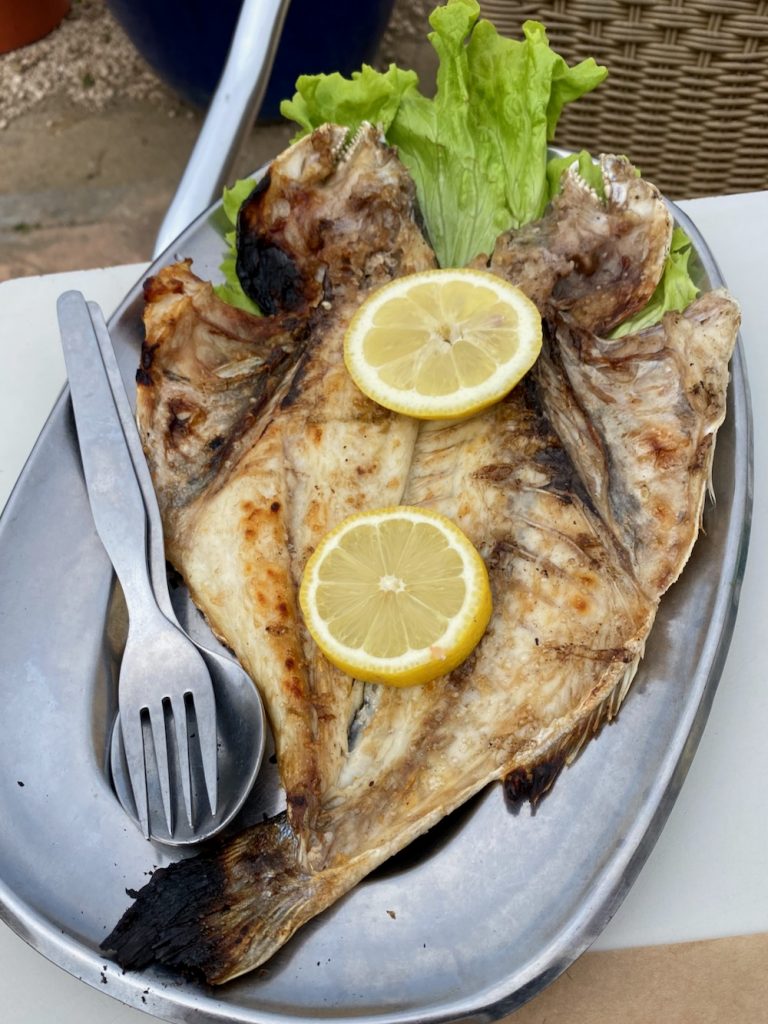
 The Algarve is popular with Brits and pretty touristy, particularly near the beach. We stayed inland, at a “boutique B&B” called Farmhouse of the Palms. Owners Veronique and Frank Persyn have converted an 18th-century building into a lovely hotel that punches well above its weight.
The Algarve is popular with Brits and pretty touristy, particularly near the beach. We stayed inland, at a “boutique B&B” called Farmhouse of the Palms. Owners Veronique and Frank Persyn have converted an 18th-century building into a lovely hotel that punches well above its weight.
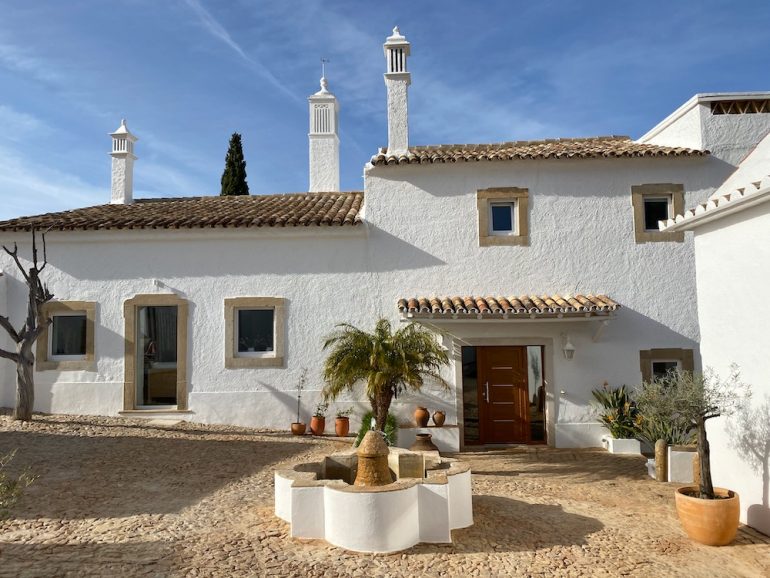
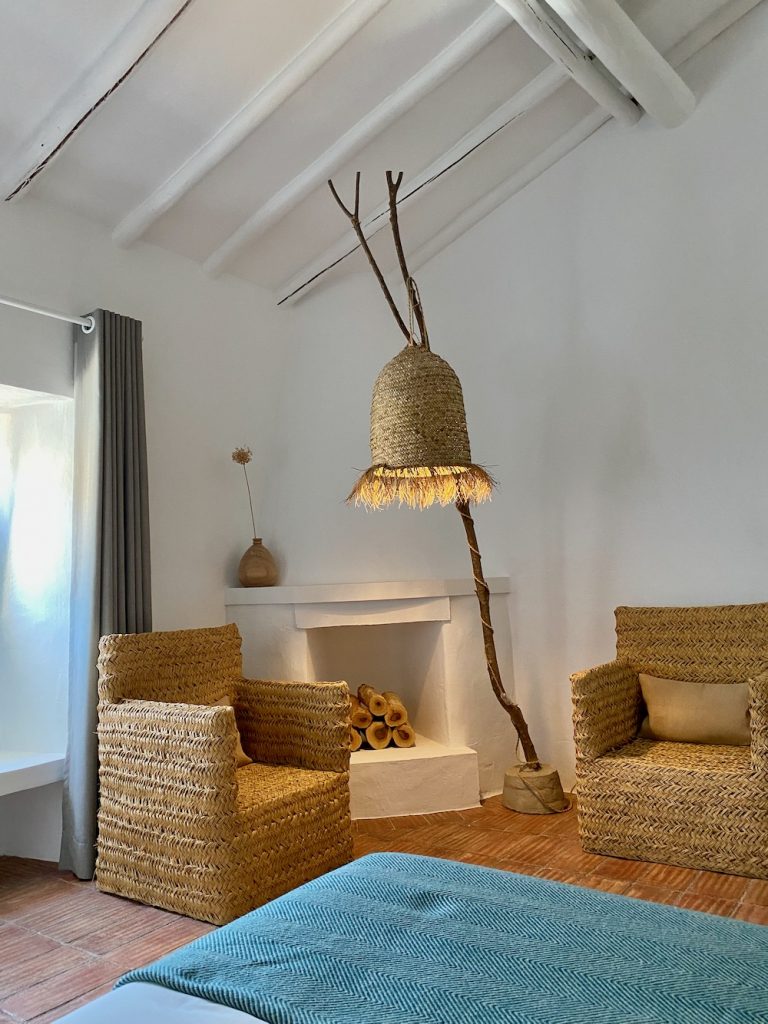
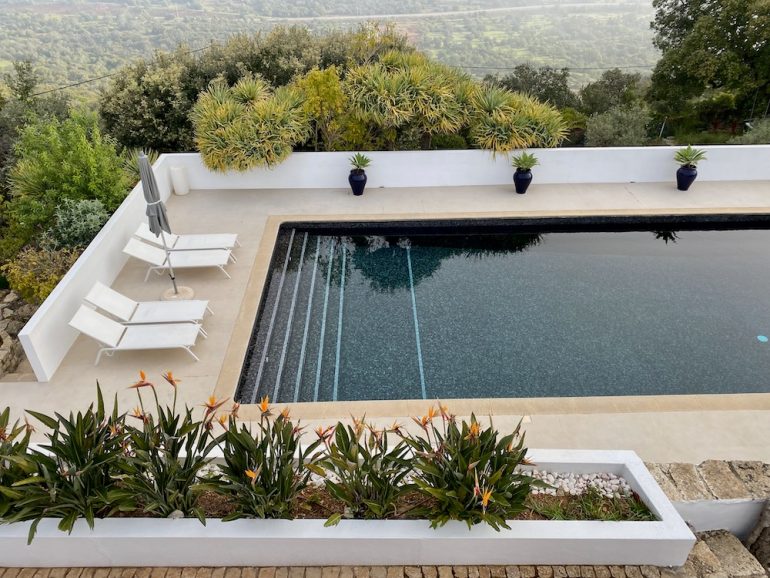 In their handy rundown of activities, Frank and Veronique included several appealing walks, but then there was this: “The coastal walk between Praia do Castelo and Praia São Rafael is probably THE most beautiful walk you can make,” and how could we go anywhere else? I was beaming the whole time. The geography was stunning, and because there weren’t that many people—which may not be the case in high summer—we could meander and explore on our own.
In their handy rundown of activities, Frank and Veronique included several appealing walks, but then there was this: “The coastal walk between Praia do Castelo and Praia São Rafael is probably THE most beautiful walk you can make,” and how could we go anywhere else? I was beaming the whole time. The geography was stunning, and because there weren’t that many people—which may not be the case in high summer—we could meander and explore on our own.
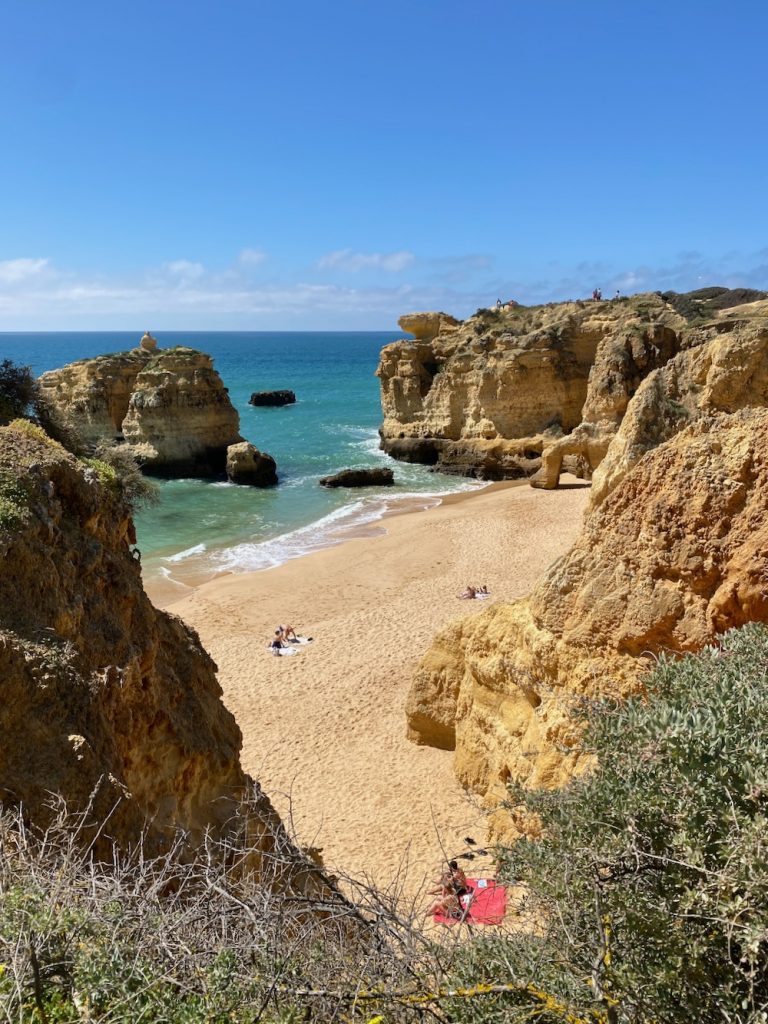
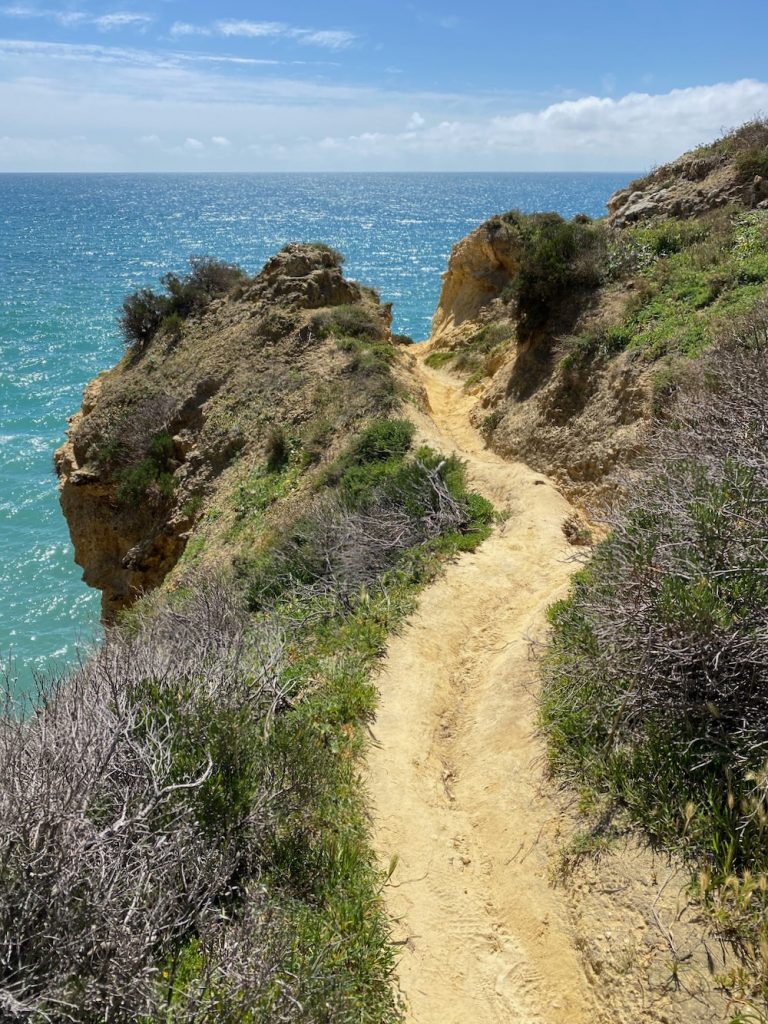
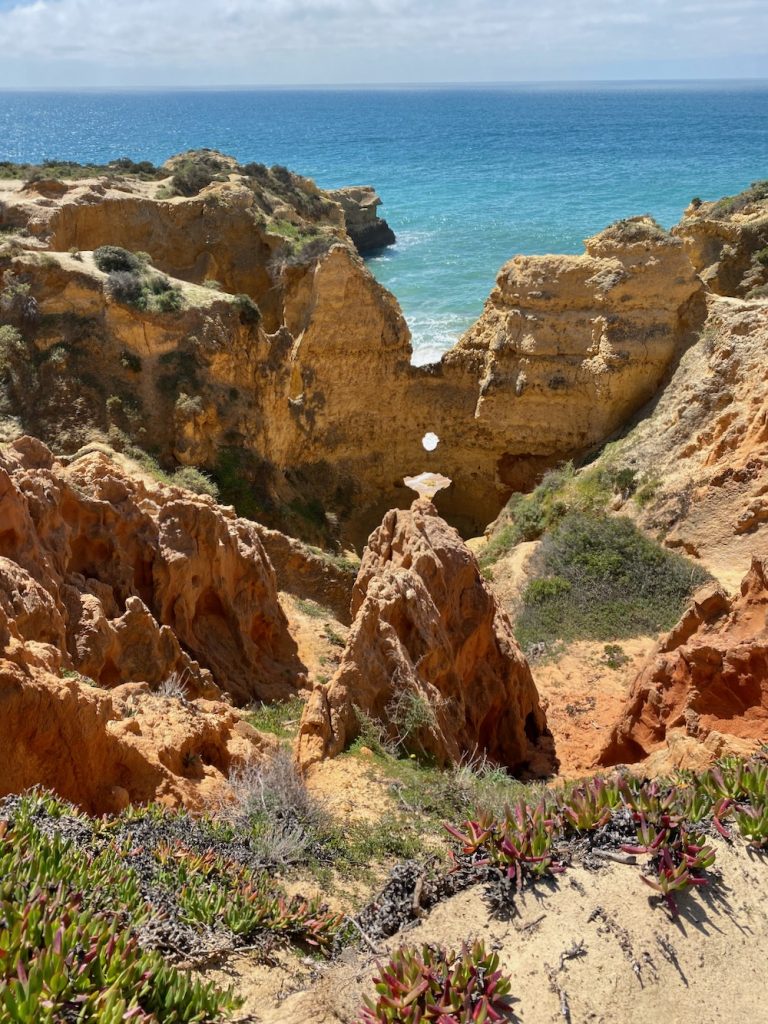
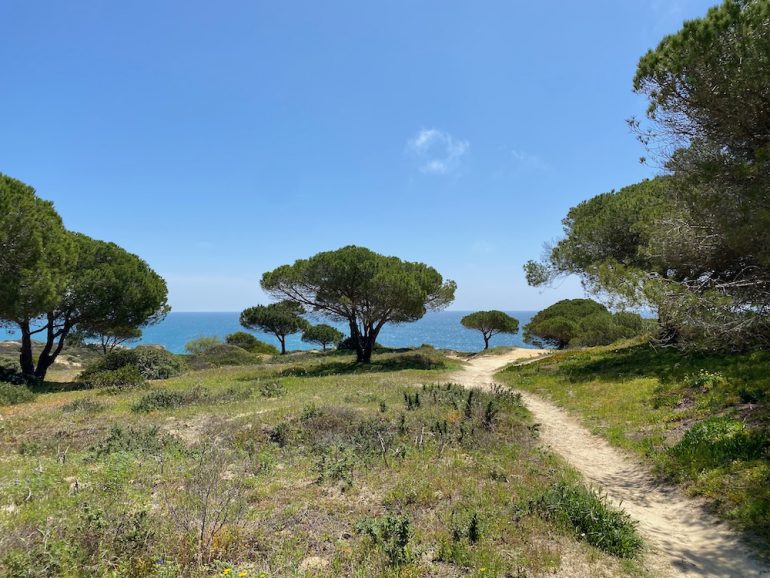
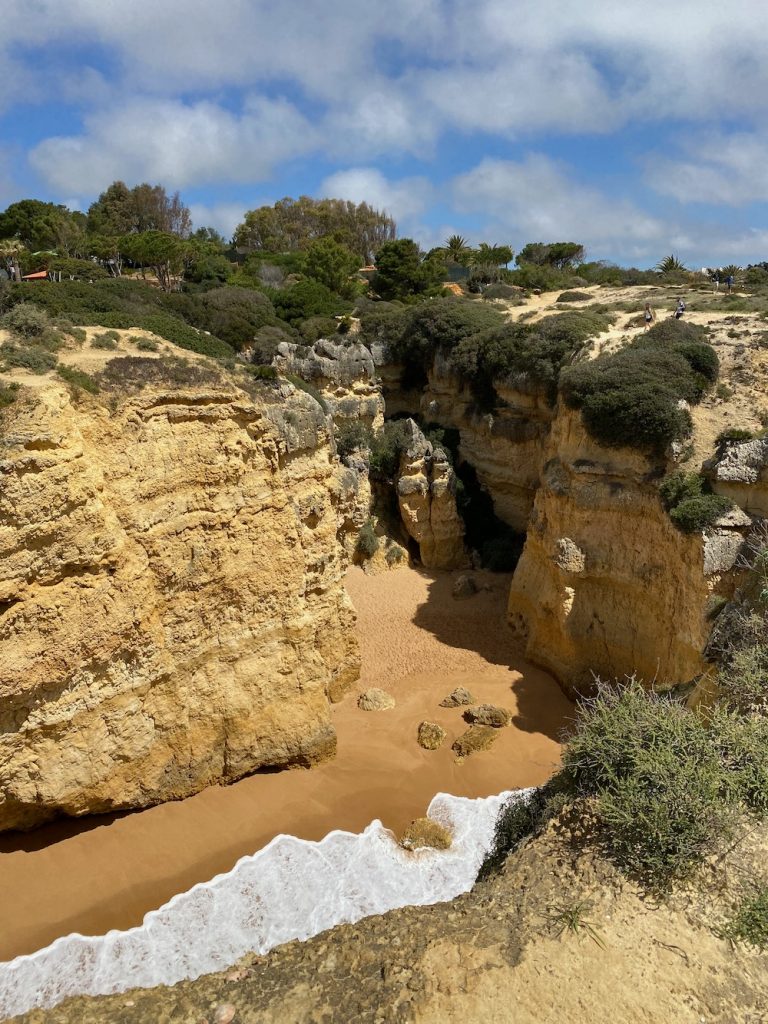 After two nights, we were back in the car, this time to drive north, to the Alentejo region. I wish we had spent more time in the elegant city of Évora…
After two nights, we were back in the car, this time to drive north, to the Alentejo region. I wish we had spent more time in the elegant city of Évora…
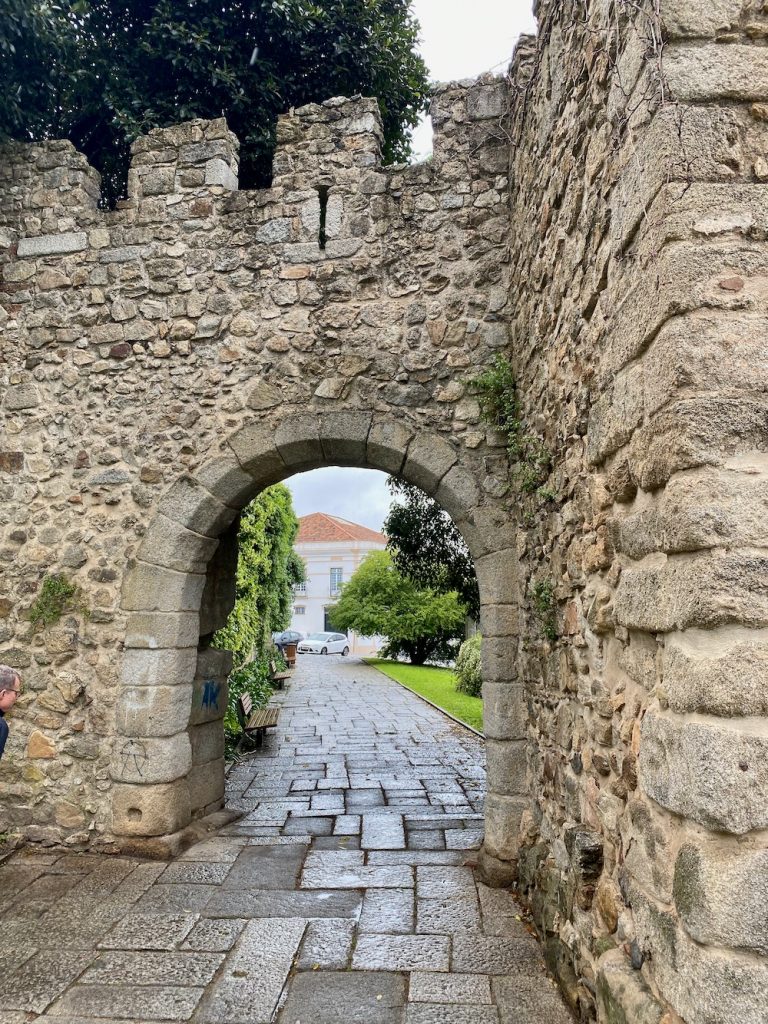 …but we were expected at Da Licença, which turned out to be one of the stranger hotel experiences either of us could remember. The couple that owns it took an old mill on 300 acres of olive groves and made it into a showcase of design; many of the rooms are in outbuildings.
…but we were expected at Da Licença, which turned out to be one of the stranger hotel experiences either of us could remember. The couple that owns it took an old mill on 300 acres of olive groves and made it into a showcase of design; many of the rooms are in outbuildings.
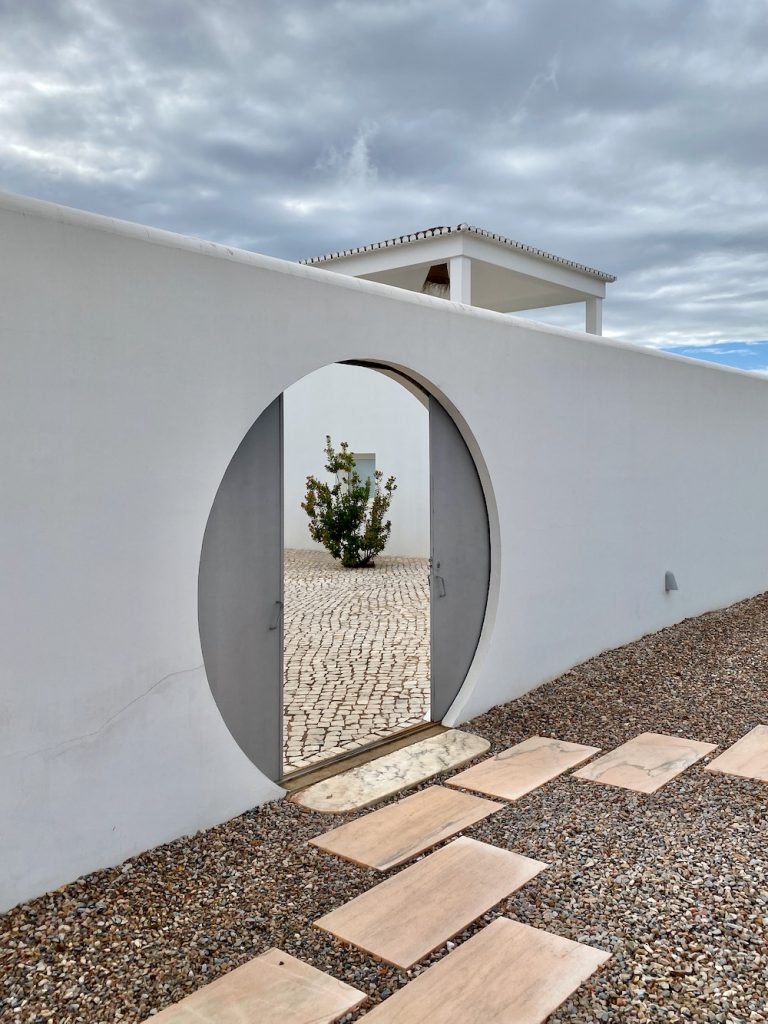

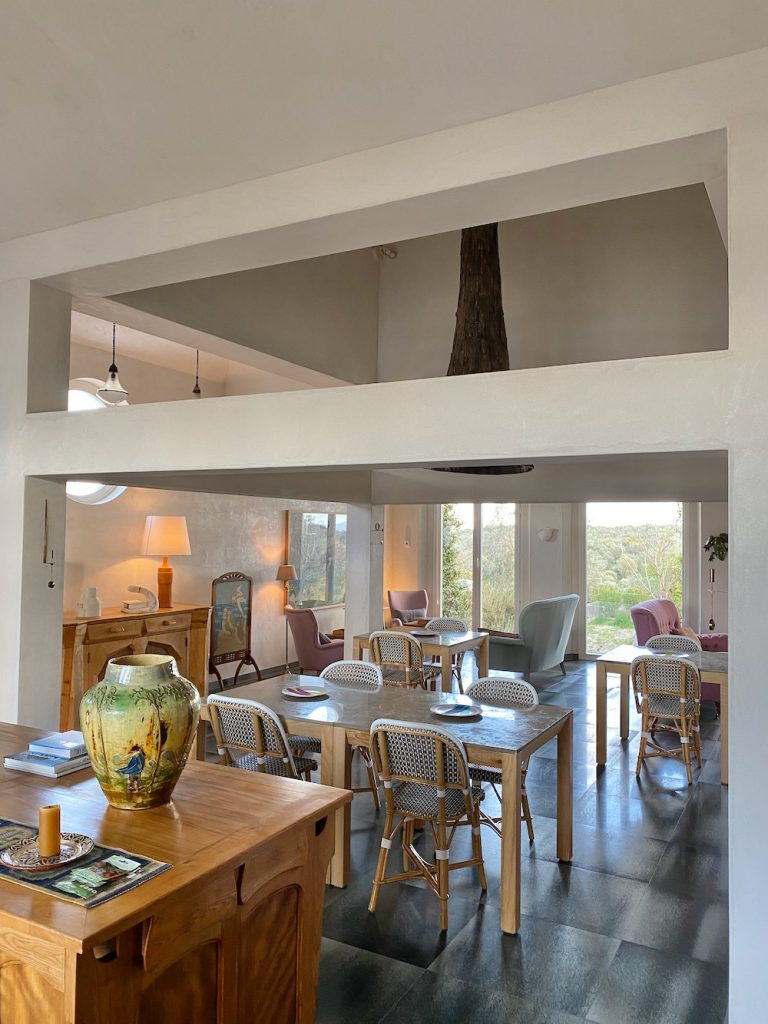
The grounds are impeccable. The pool—the photo doesn’t do it justice—was the most glamorous one I have ever seen, with a marble deck and lounge chairs placed discreetly around the perimeter, like animals awaiting a turn at the watering hole.
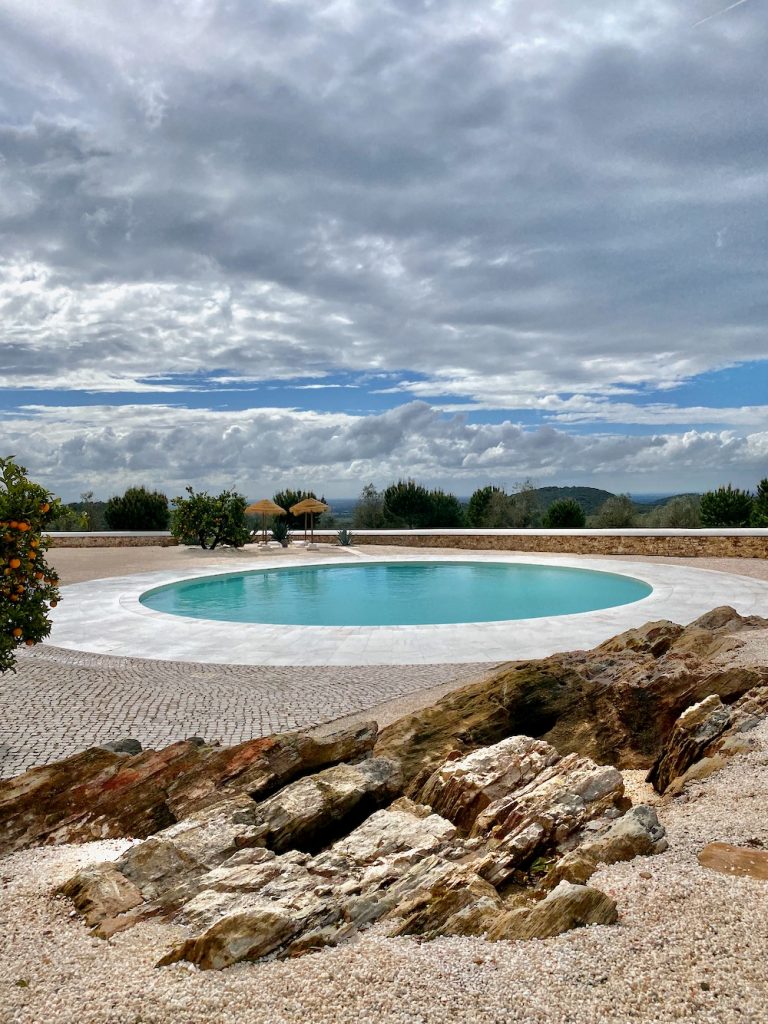
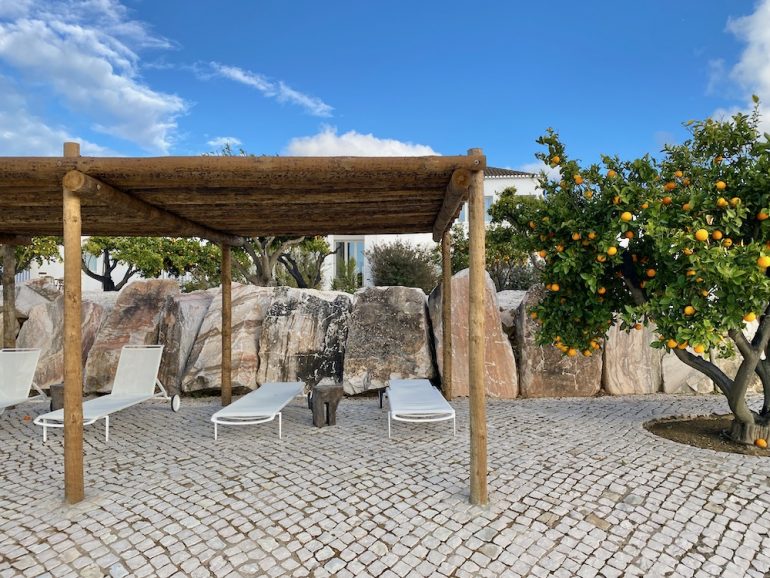 Our room had a private pool—entirely lined in marble—but the weather didn’t cooperate. The aforementioned strangeness had a bit to do with the room: only instant coffee, no door on the bathroom (who likes that?), a dorm fridge alone in the corner, a €10 delivery fee if you wanted a snack or beverage beyond the water and juice in said fridge…. Our main issue with the hotel, however, was that we didn’t really feel welcome—interactions with the owners and staff were awkward, as if they were more interested in decorating a hotel than hosting guests. Perhaps we were annoying; perhaps it was just early in the season and they hadn’t warmed up yet.
Our room had a private pool—entirely lined in marble—but the weather didn’t cooperate. The aforementioned strangeness had a bit to do with the room: only instant coffee, no door on the bathroom (who likes that?), a dorm fridge alone in the corner, a €10 delivery fee if you wanted a snack or beverage beyond the water and juice in said fridge…. Our main issue with the hotel, however, was that we didn’t really feel welcome—interactions with the owners and staff were awkward, as if they were more interested in decorating a hotel than hosting guests. Perhaps we were annoying; perhaps it was just early in the season and they hadn’t warmed up yet.
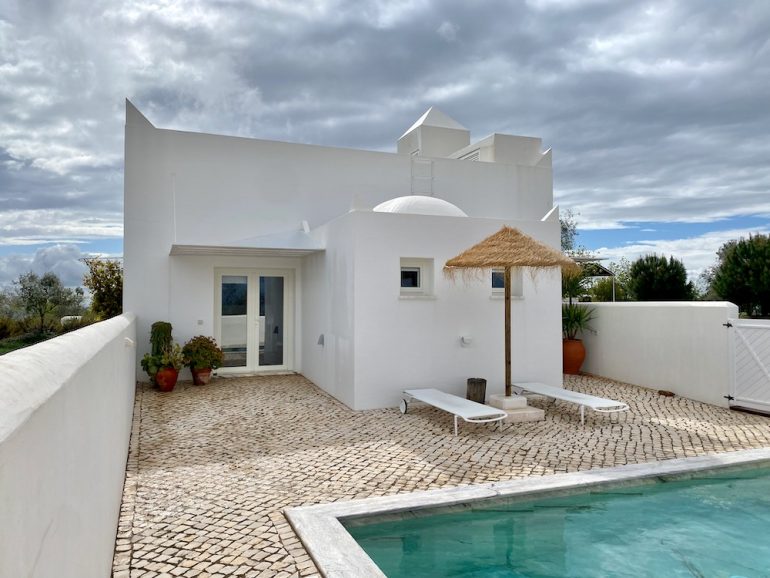
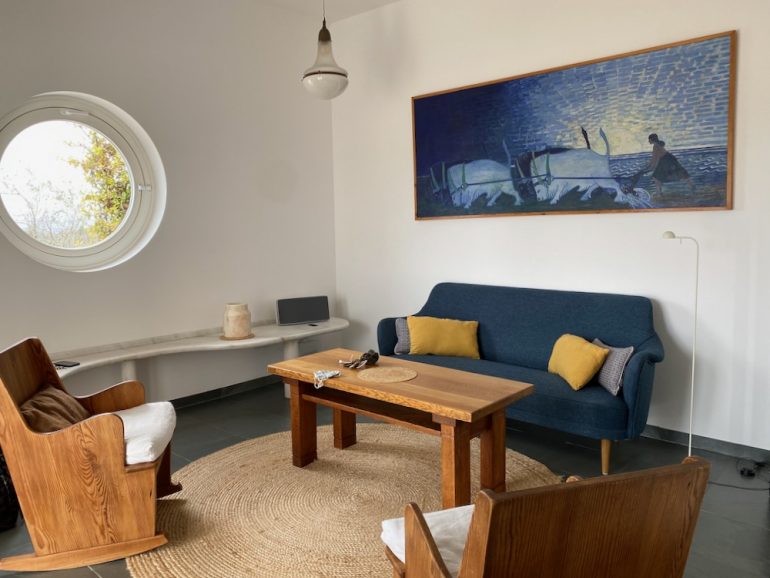 The nearest town is Estremoz, known for its marble: “There is so much marble around Estremoz that it is used everywhere; even the doorsteps, pavements and the cobble stones are made out of marble,” reports Wikipedia. “This marble is even converted into whitewash for painting the houses.”
The nearest town is Estremoz, known for its marble: “There is so much marble around Estremoz that it is used everywhere; even the doorsteps, pavements and the cobble stones are made out of marble,” reports Wikipedia. “This marble is even converted into whitewash for painting the houses.”
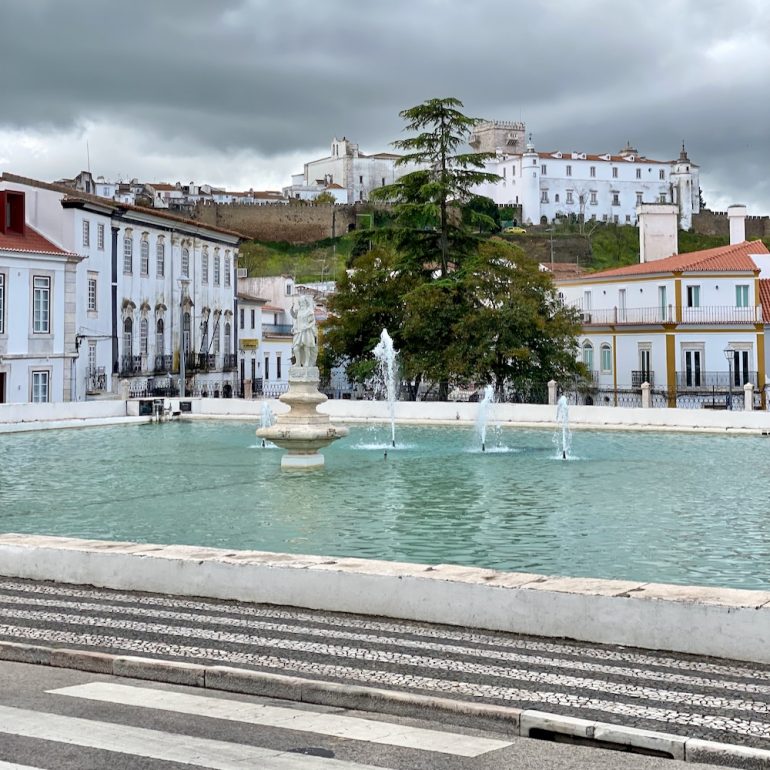
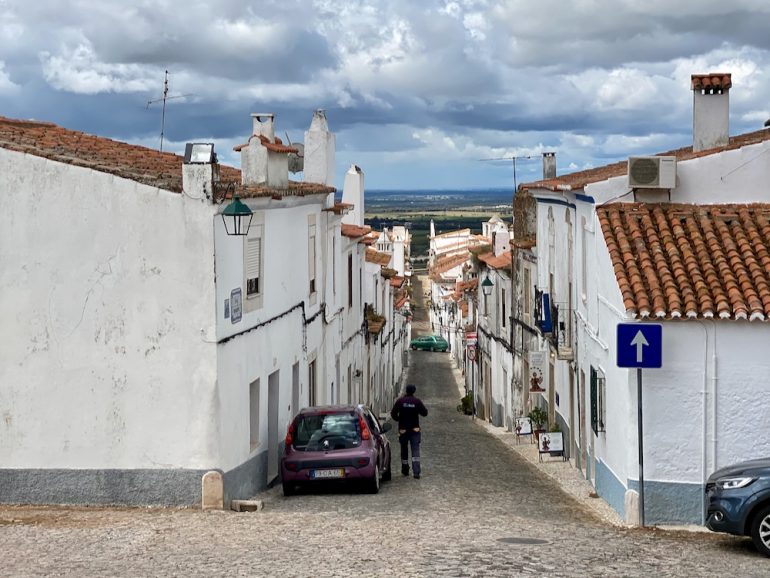
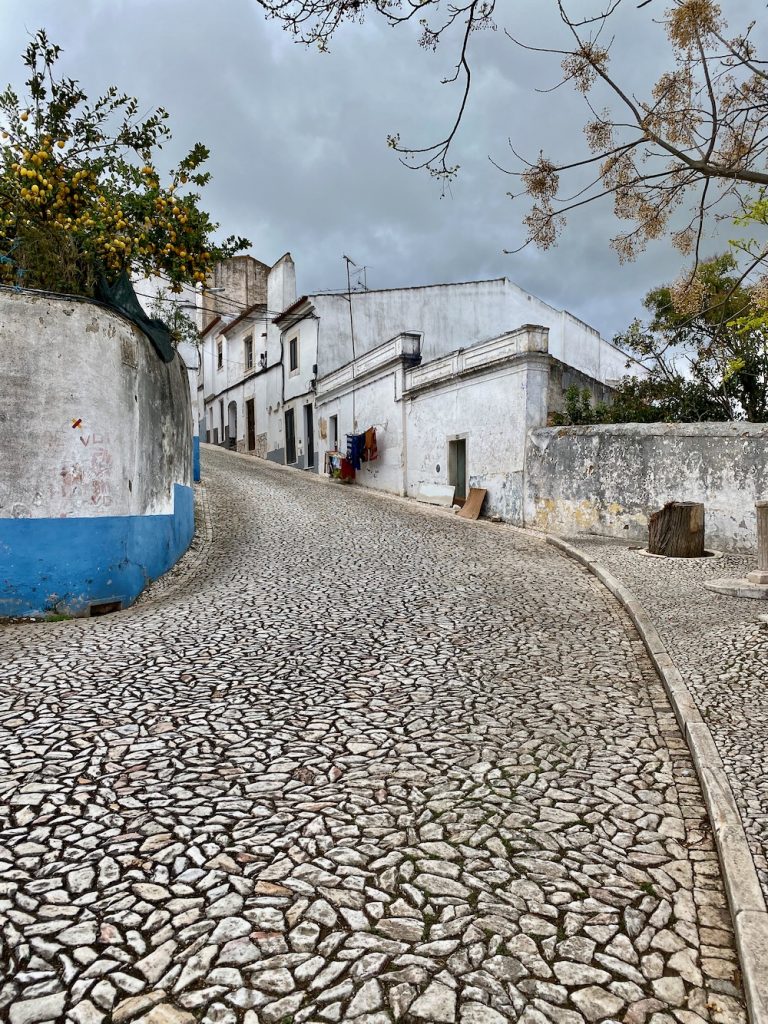 I adore marble and view it as an abject failure that I got so lazy about doing pre-trip research that I botched a chance to visit a marble quarry. (I’m also upset we didn’t plan a trip to this extraordinary underground winery.) But I did allow myself a non-edible souvenir: a marble sculpture by Pedro Fazenda. Elapedra gallery had a bunch of pieces by him, and I wanted them all.
I adore marble and view it as an abject failure that I got so lazy about doing pre-trip research that I botched a chance to visit a marble quarry. (I’m also upset we didn’t plan a trip to this extraordinary underground winery.) But I did allow myself a non-edible souvenir: a marble sculpture by Pedro Fazenda. Elapedra gallery had a bunch of pieces by him, and I wanted them all.
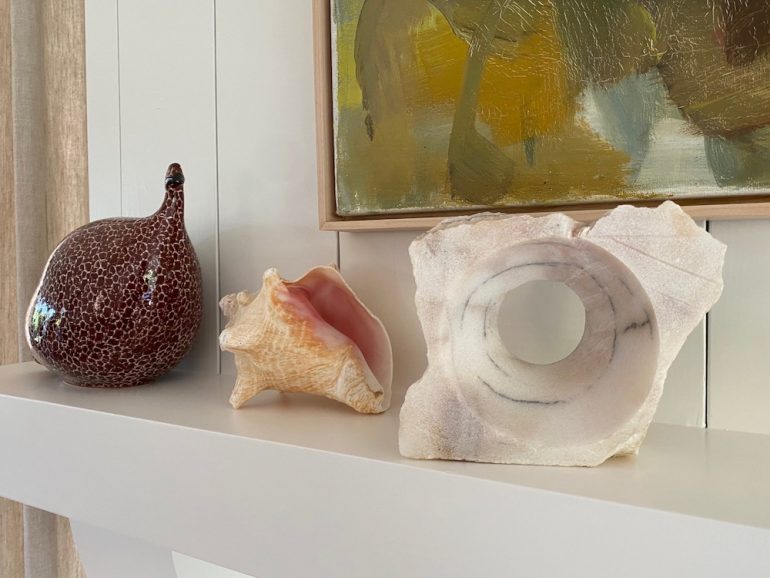 I should mention that while the weather was appropriate for April—i.e., occasionally rainy—we did get to see many gorgeous wildflowers.
I should mention that while the weather was appropriate for April—i.e., occasionally rainy—we did get to see many gorgeous wildflowers.
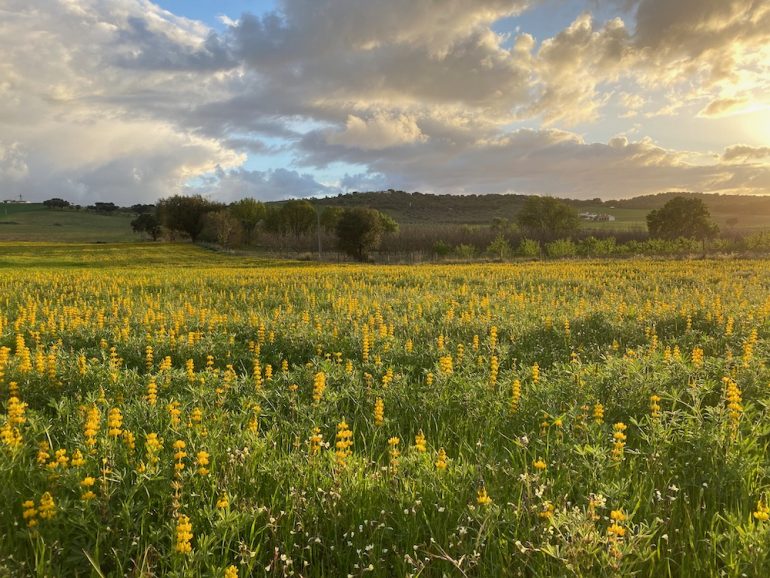 A friend had recommended the village of Monsanto, built atop a mountain amid massive boulders. As you can see, the buildings are made of stone, too. It’s like a cross between a fairy tale and “The Flintstones.”
A friend had recommended the village of Monsanto, built atop a mountain amid massive boulders. As you can see, the buildings are made of stone, too. It’s like a cross between a fairy tale and “The Flintstones.”
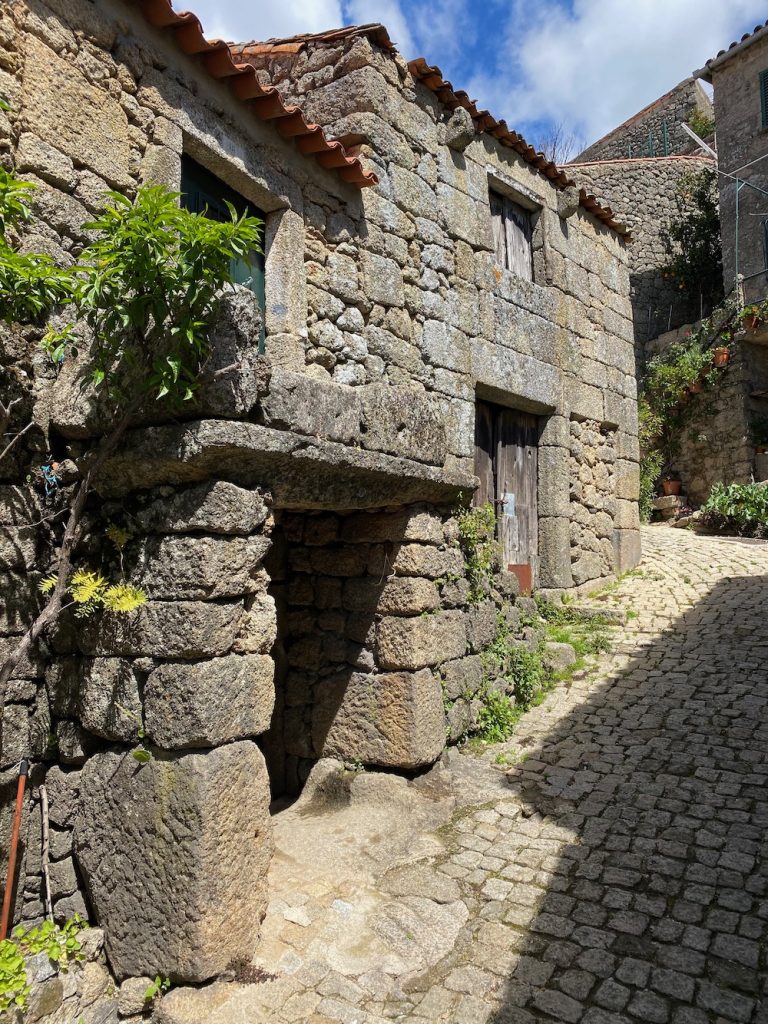
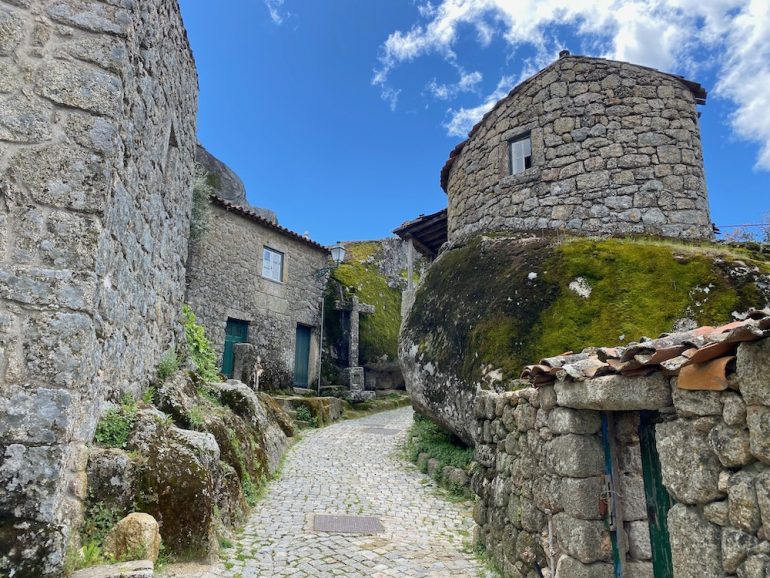 The best part was the medieval castle, where visitors can clamber to their hearts’ content. We walked all over the walls and were rewarded with fantastic views.
The best part was the medieval castle, where visitors can clamber to their hearts’ content. We walked all over the walls and were rewarded with fantastic views.
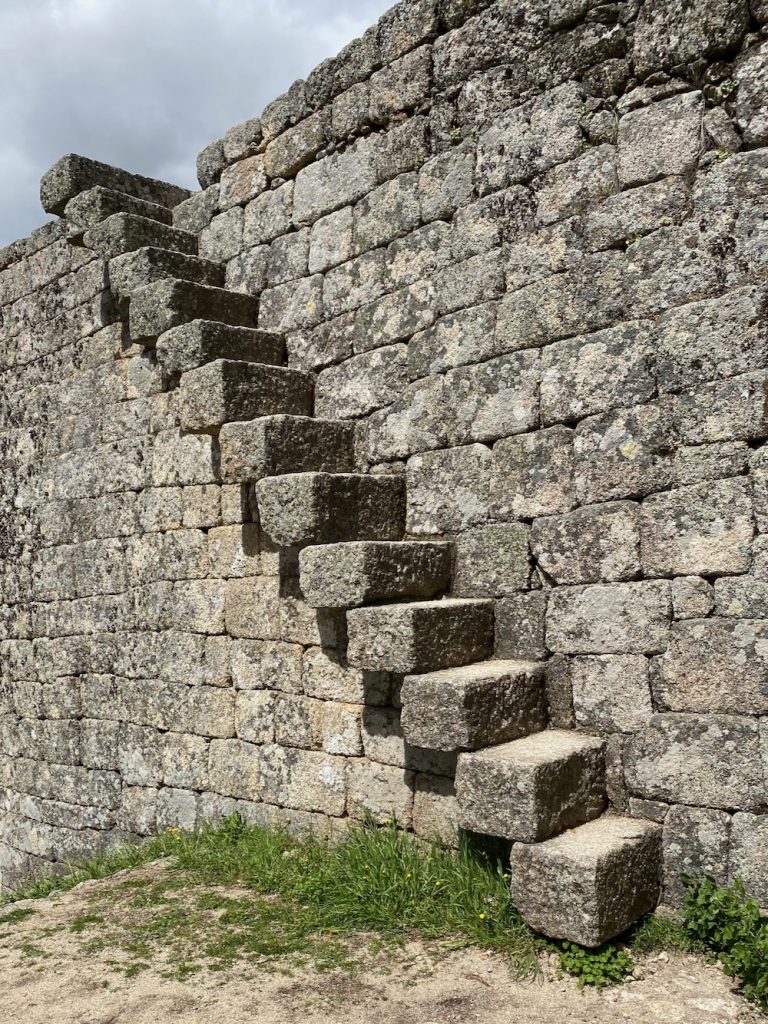
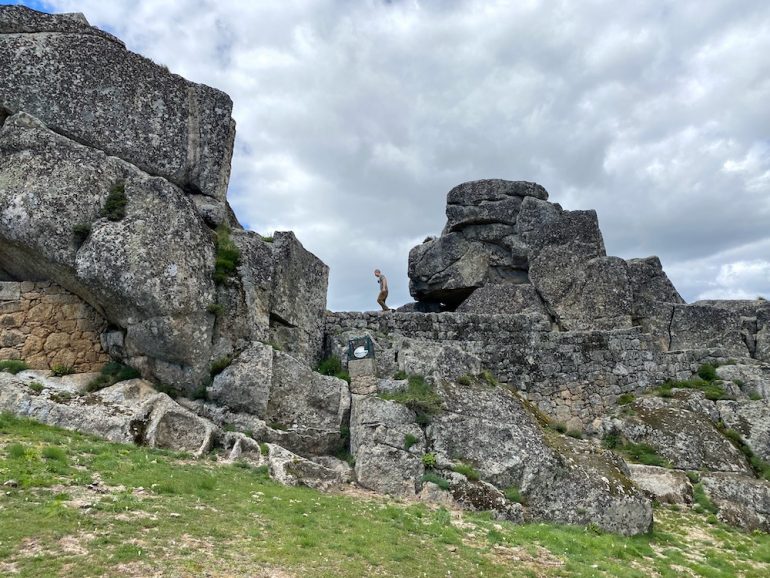
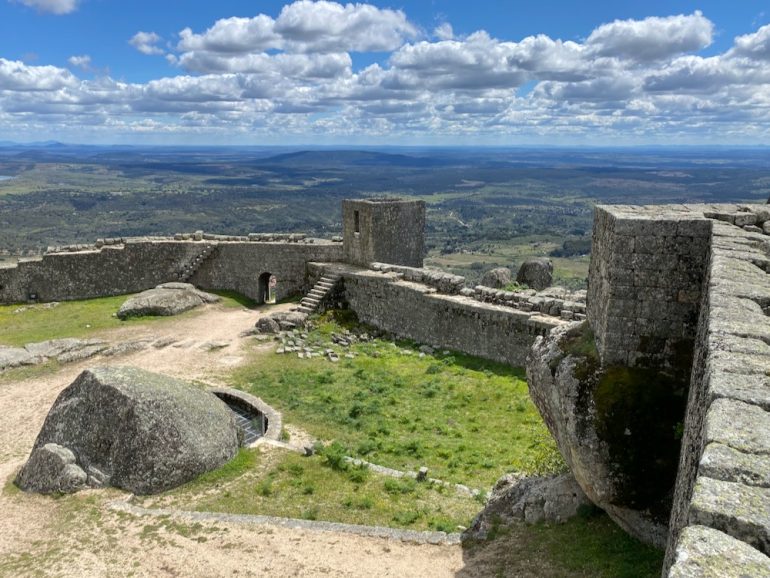
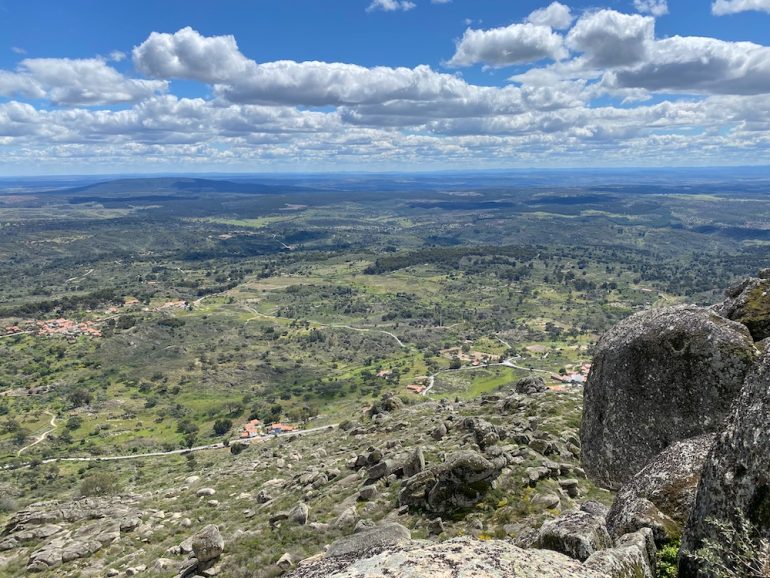 Our second-to-last stop—yes, there’s light at the end of this tunnel—was in the Douro Valley, Portugal’s best-known wine (and port) region. With terraced hillsides on either side of the winding Douro River, the geography puts Napa Valley to shame.
Our second-to-last stop—yes, there’s light at the end of this tunnel—was in the Douro Valley, Portugal’s best-known wine (and port) region. With terraced hillsides on either side of the winding Douro River, the geography puts Napa Valley to shame.
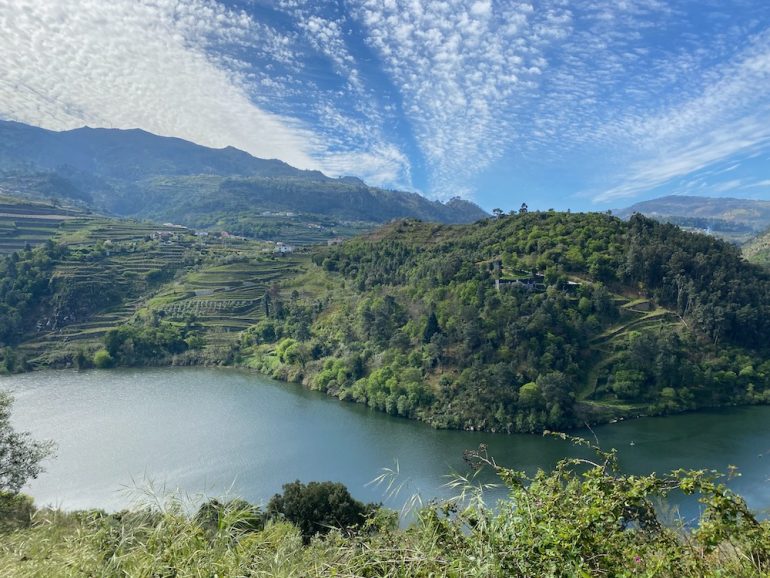 And the hotel, Quinta de S. Bernardo, was ideally situated. I’m not one for lounging by a pool, but the setting was so idyllic, so relaxing, that I think I could’ve spent a couple of days just hanging out. (And I loved how the pool area has a buzzer to summon a server.) It helped that the food was excellent, with the exception of the coffee. (For all its merits, Portugal is not a country of good coffee or fresh vegetables.) My only concern in giving the hotel an unqualified recommendation is that the rooms are small. I had to stand in the hall to take a photo of ours, and what you can’t see is that the sink is across from the bed and the toilet and shower are in a very narrow L-shaped room. But the large balcony helped make up for it.
And the hotel, Quinta de S. Bernardo, was ideally situated. I’m not one for lounging by a pool, but the setting was so idyllic, so relaxing, that I think I could’ve spent a couple of days just hanging out. (And I loved how the pool area has a buzzer to summon a server.) It helped that the food was excellent, with the exception of the coffee. (For all its merits, Portugal is not a country of good coffee or fresh vegetables.) My only concern in giving the hotel an unqualified recommendation is that the rooms are small. I had to stand in the hall to take a photo of ours, and what you can’t see is that the sink is across from the bed and the toilet and shower are in a very narrow L-shaped room. But the large balcony helped make up for it.
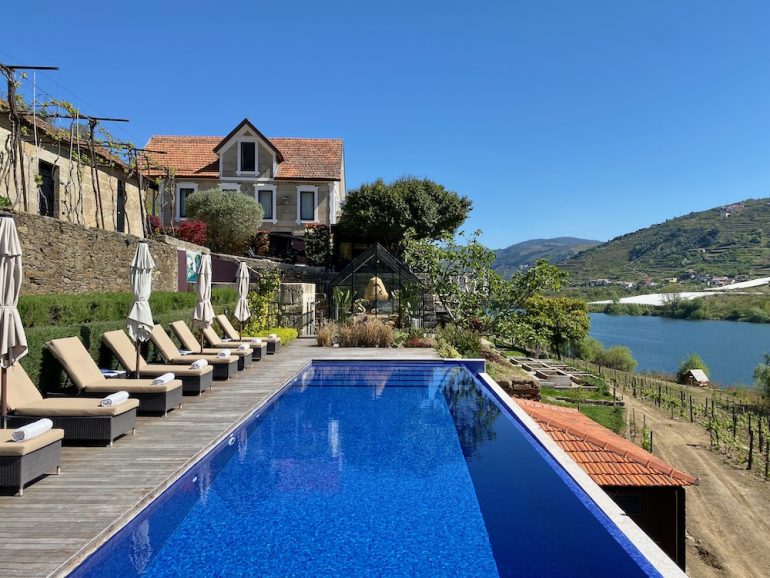

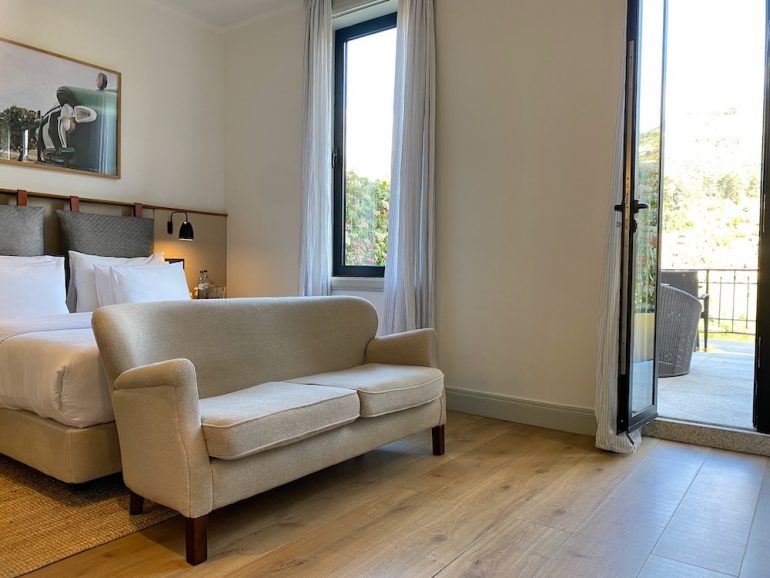
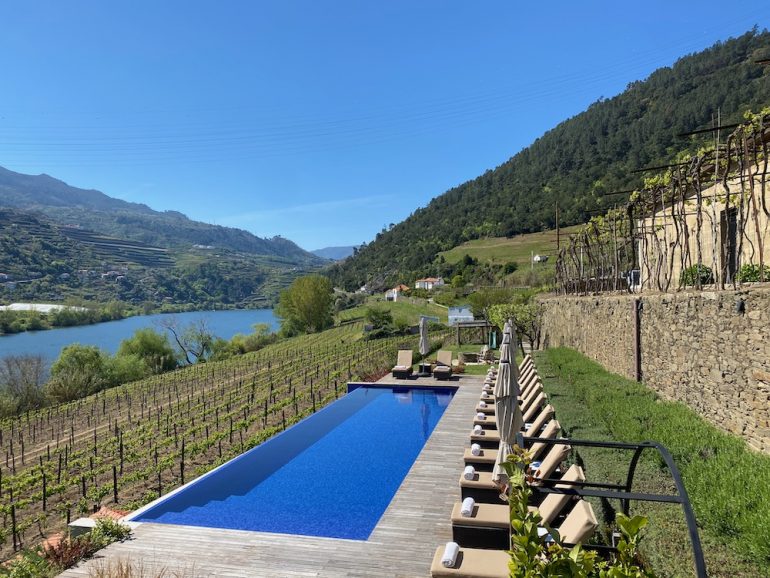 Last stop! Portugal’s second city, Porto. We stayed at the apartment annex of a hotel called Armazém. For reasons known only to the architect, our unit had four levels, with the living room at the bottom and, thankfully, the bedroom at the top, toward the rear of the building. We were in town over Easter weekend, along with half of Spain, and the hotel is on a pedestrian-only thoroughfare popular with tourists (and the occasional busking marching band).
Last stop! Portugal’s second city, Porto. We stayed at the apartment annex of a hotel called Armazém. For reasons known only to the architect, our unit had four levels, with the living room at the bottom and, thankfully, the bedroom at the top, toward the rear of the building. We were in town over Easter weekend, along with half of Spain, and the hotel is on a pedestrian-only thoroughfare popular with tourists (and the occasional busking marching band).
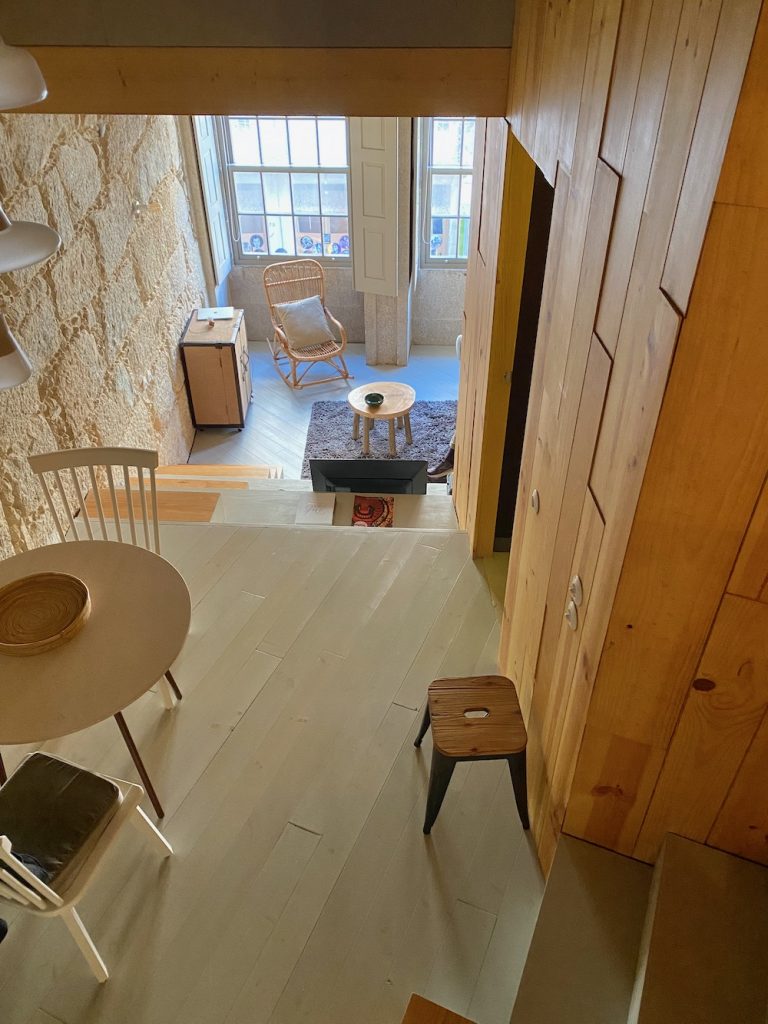
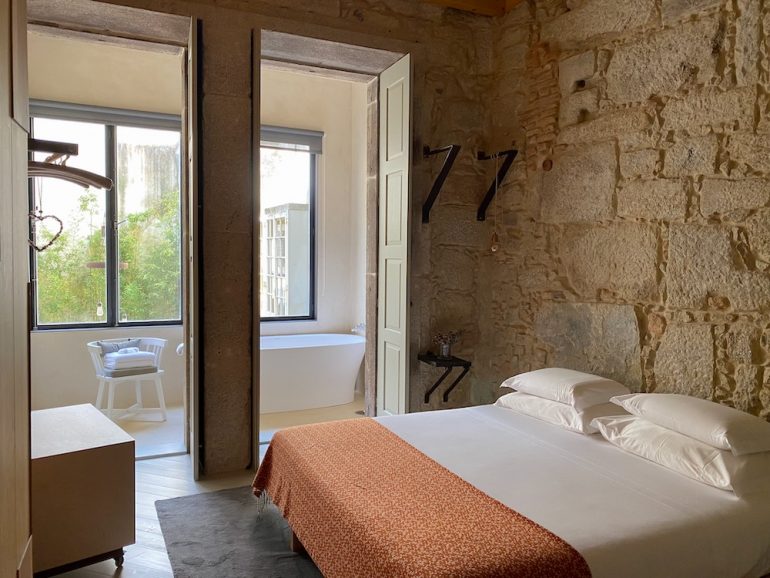
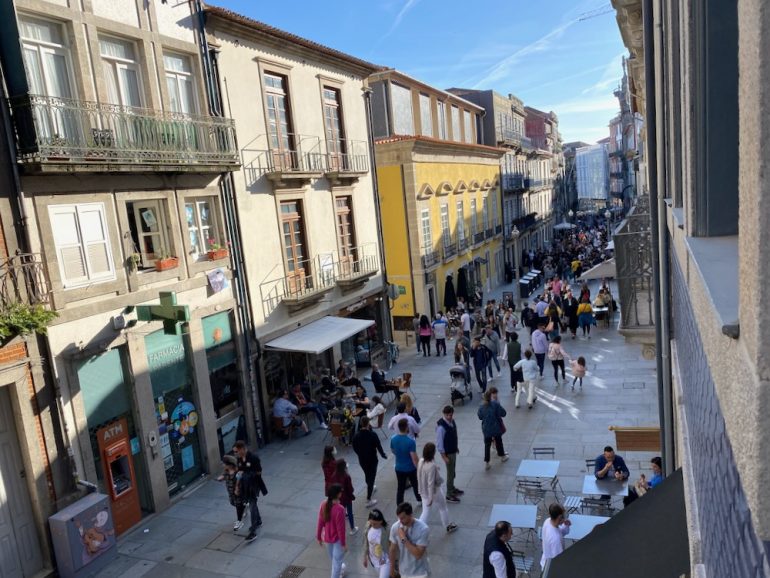 Even the hordes of people couldn’t totally distract from how incredibly beautiful Porto is, particularly near the Douro River.
Even the hordes of people couldn’t totally distract from how incredibly beautiful Porto is, particularly near the Douro River.


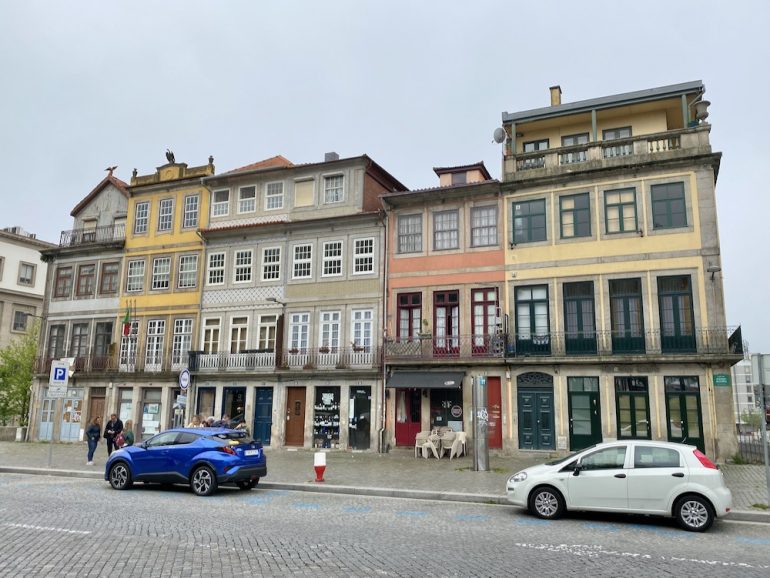
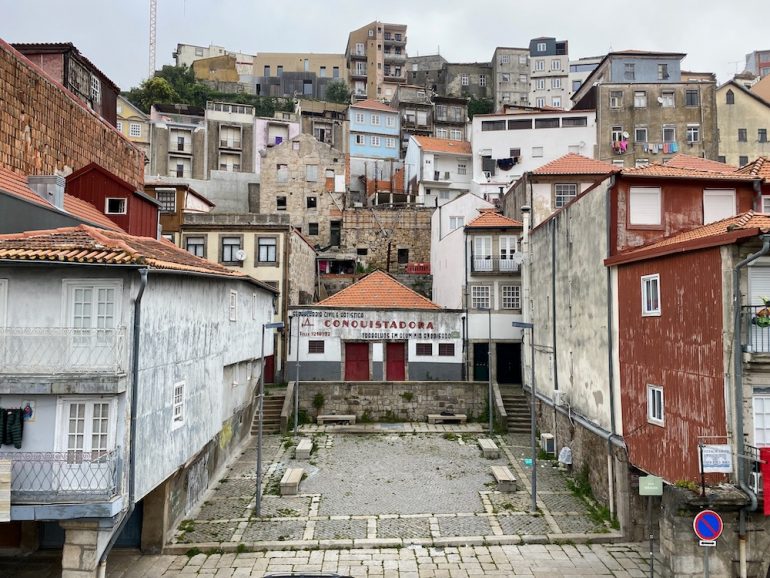
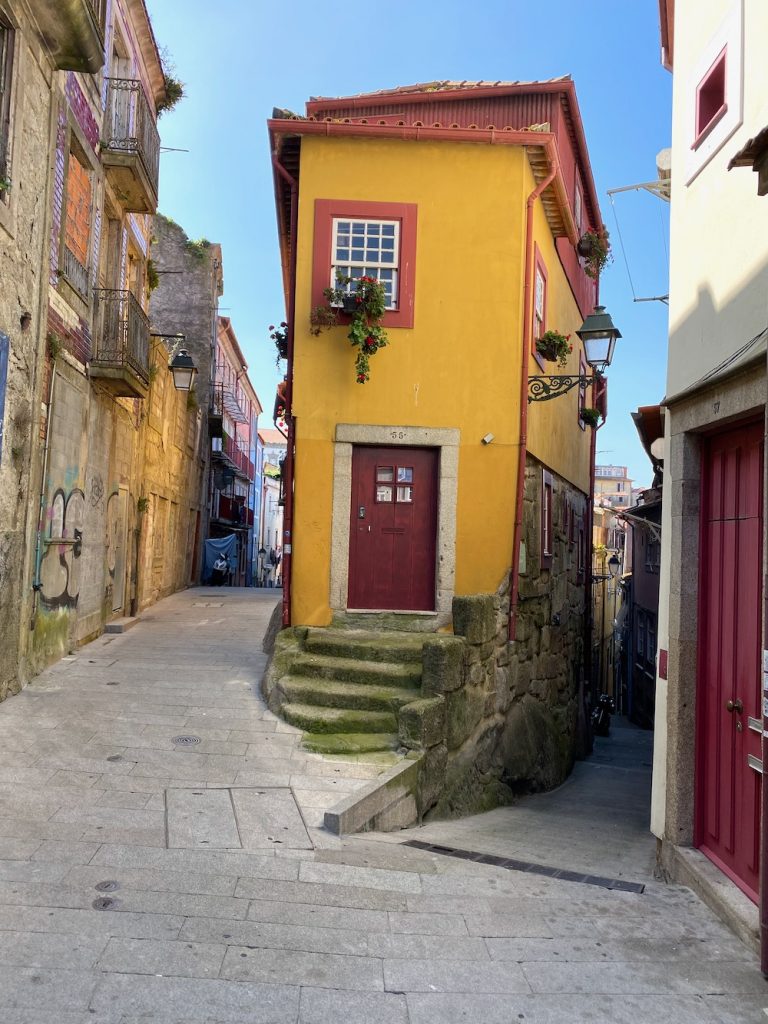 That said, we spent as little time as possible in the old town, despite its physical charm. One afternoon, we explored the upscale Foz neighborhood. (That tram comes within inches of the restaurant parklet.) And on our last day, which happened to be Easter, we went for a mammoth walk. We passed through parts of Porto I’m sure no tourist has ever seen, but once we got to the beach neighborhood of Miramar, the long boardwalk proved a welcome break from sidewalks and crowds. And in this part of Portugal, people leave flowers and leaves on their doorstep as a sign they welcome the local religious procession.
That said, we spent as little time as possible in the old town, despite its physical charm. One afternoon, we explored the upscale Foz neighborhood. (That tram comes within inches of the restaurant parklet.) And on our last day, which happened to be Easter, we went for a mammoth walk. We passed through parts of Porto I’m sure no tourist has ever seen, but once we got to the beach neighborhood of Miramar, the long boardwalk proved a welcome break from sidewalks and crowds. And in this part of Portugal, people leave flowers and leaves on their doorstep as a sign they welcome the local religious procession.
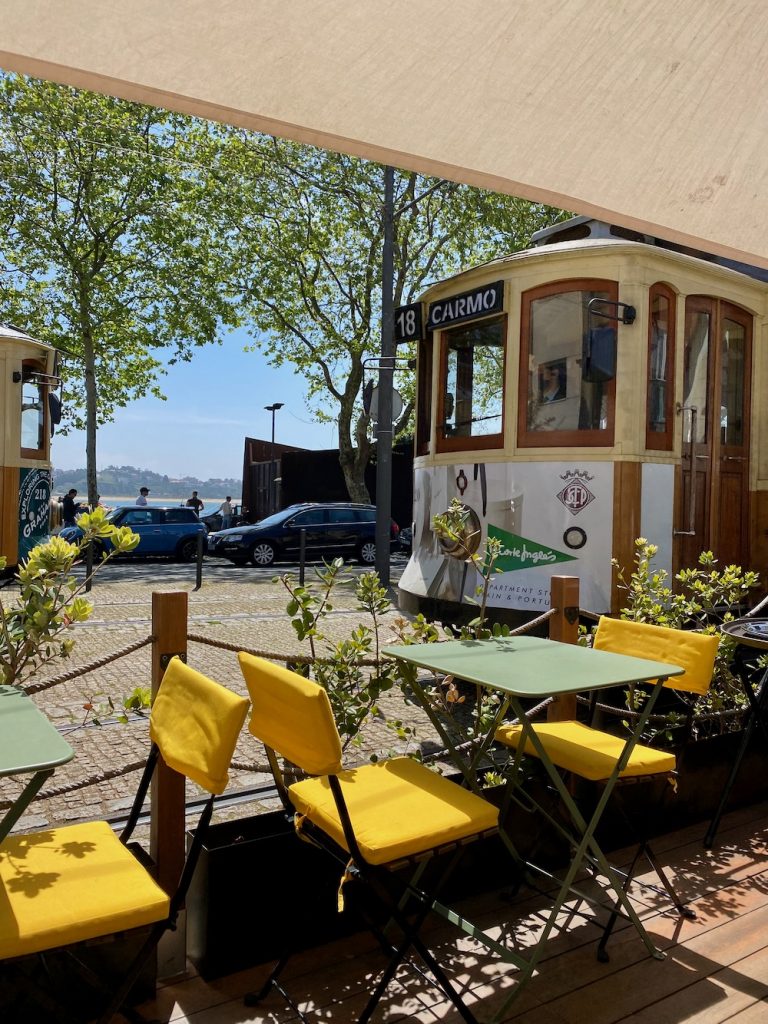
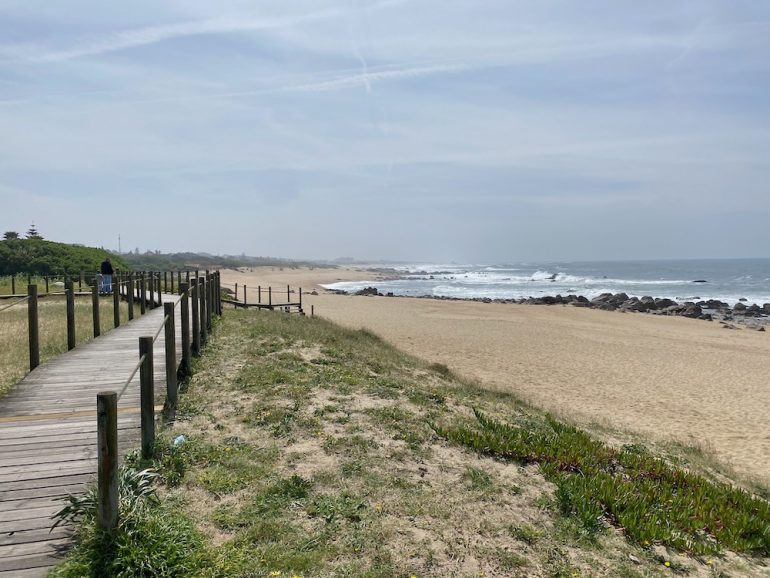
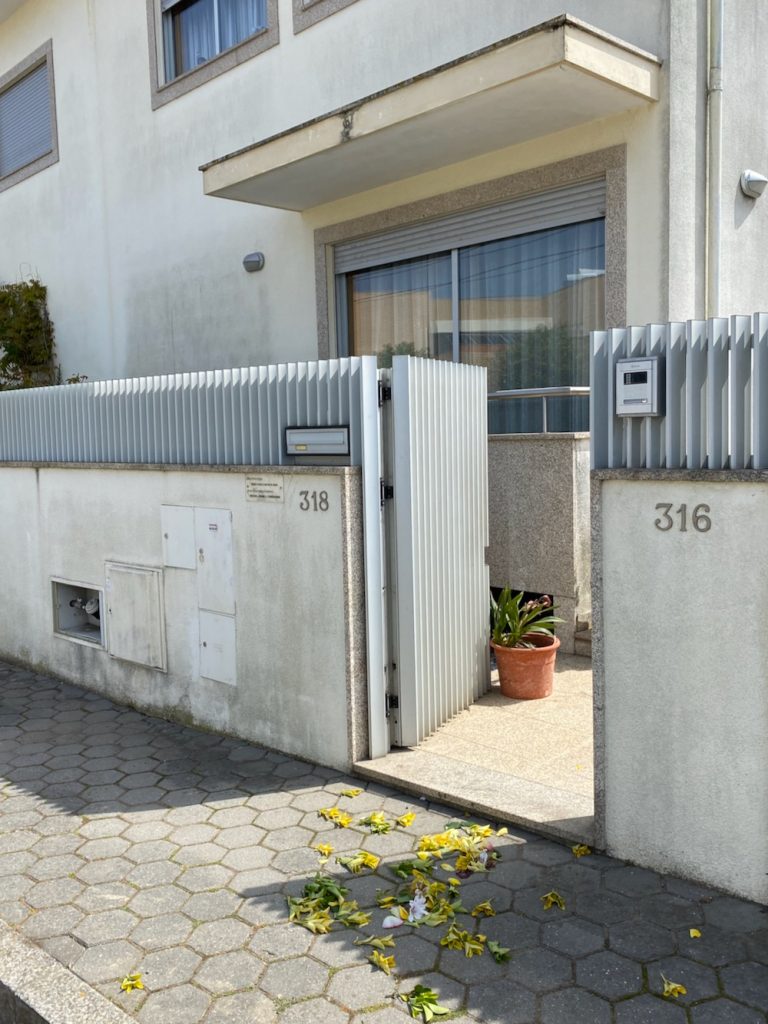 Appropriately enough, given the holiday, our destination was the Chapel of the Lord of Stone, on a rock outcropping at the water’s edge. One of the main reasons I travel is to see things I can’t see at home, and if there’s a better example anywhere, I don’t know it.
Appropriately enough, given the holiday, our destination was the Chapel of the Lord of Stone, on a rock outcropping at the water’s edge. One of the main reasons I travel is to see things I can’t see at home, and if there’s a better example anywhere, I don’t know it.
Previous travel coverage:
••• Patagonia Made Easy
••• A Quickie in L.A.
↓↓↓ From Penthouse to Pavement in Mexico City
••• Do Greek Islands Live Up to the Fantasy?
••• Splendid Isolation at Utah’s Lodge at Blue Sky
••• The Three Reasons to Visit Paso Robles Now
••• The Rebirth of the Cuyama Buckhorn


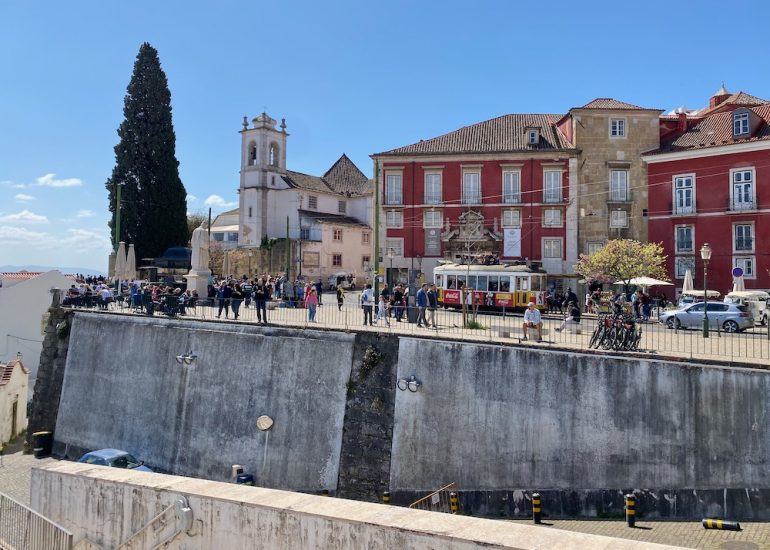

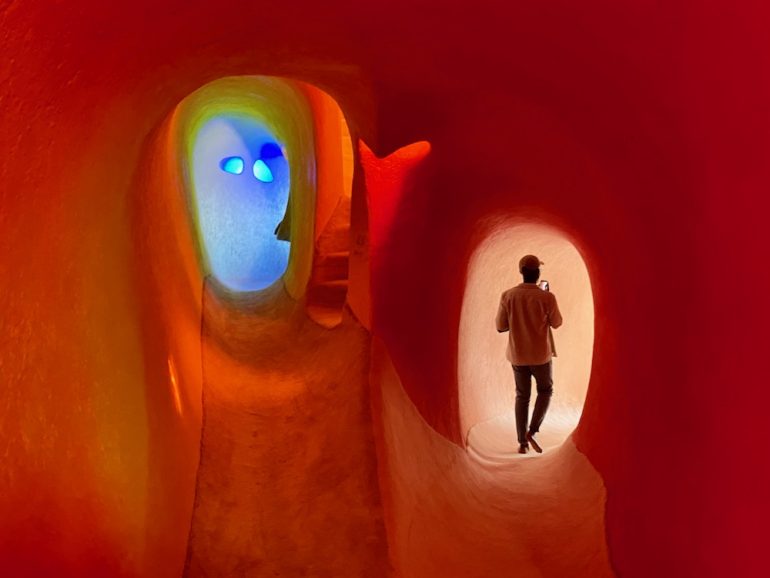






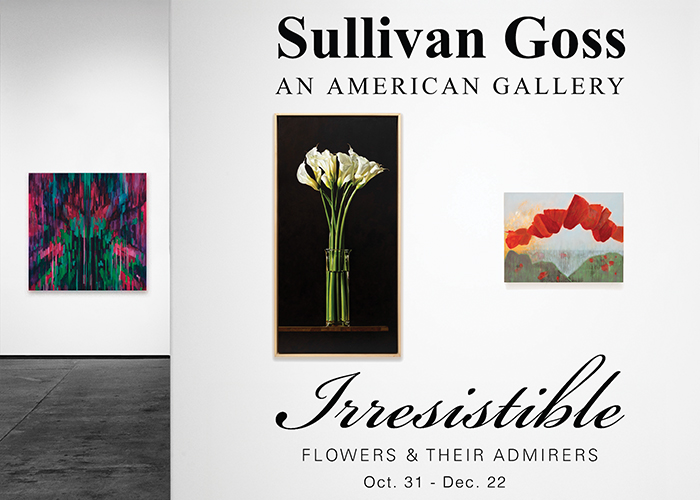




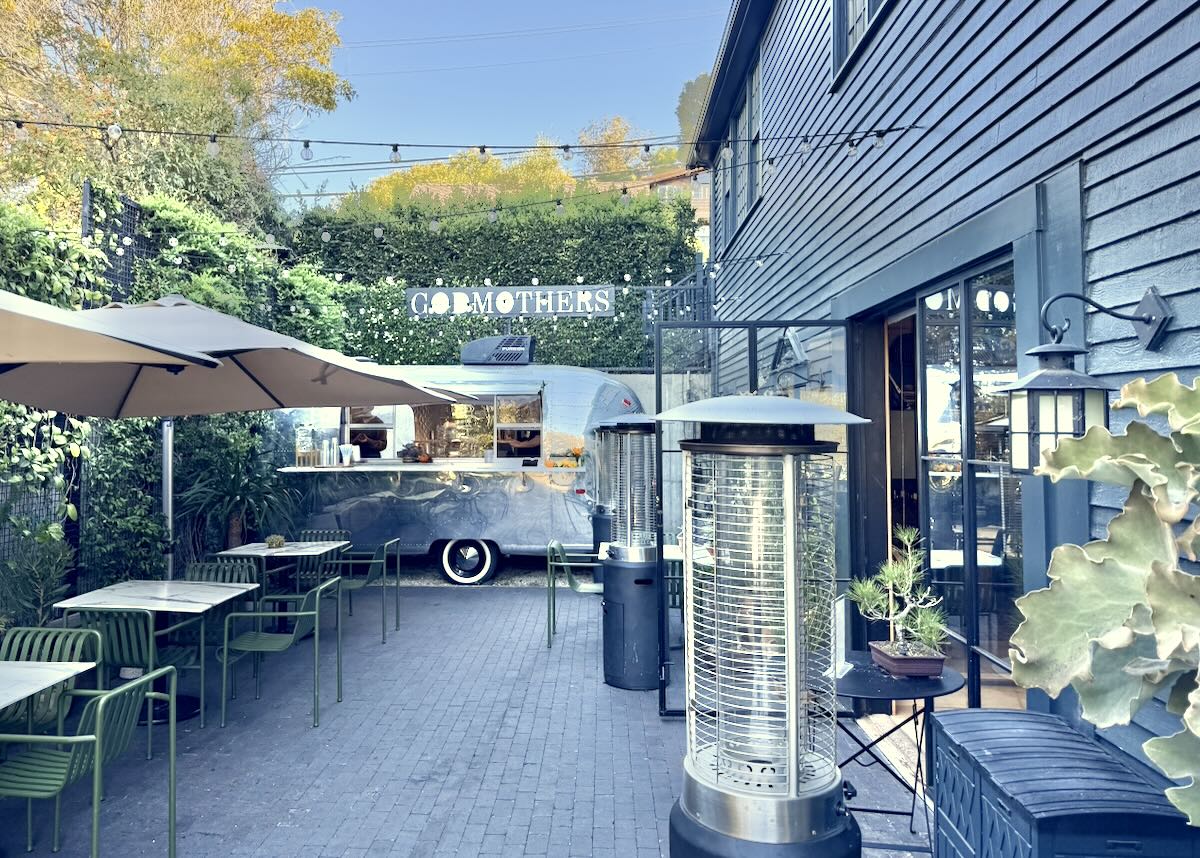
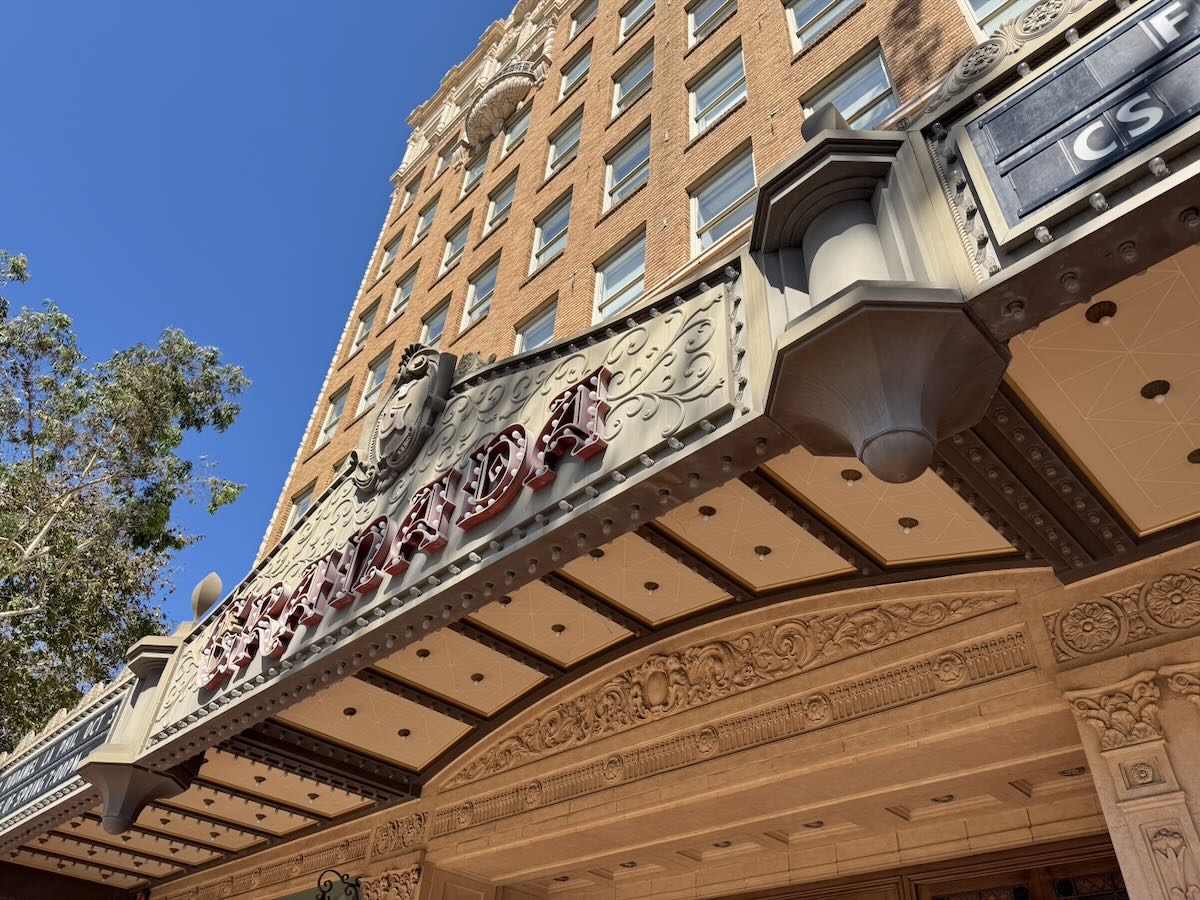

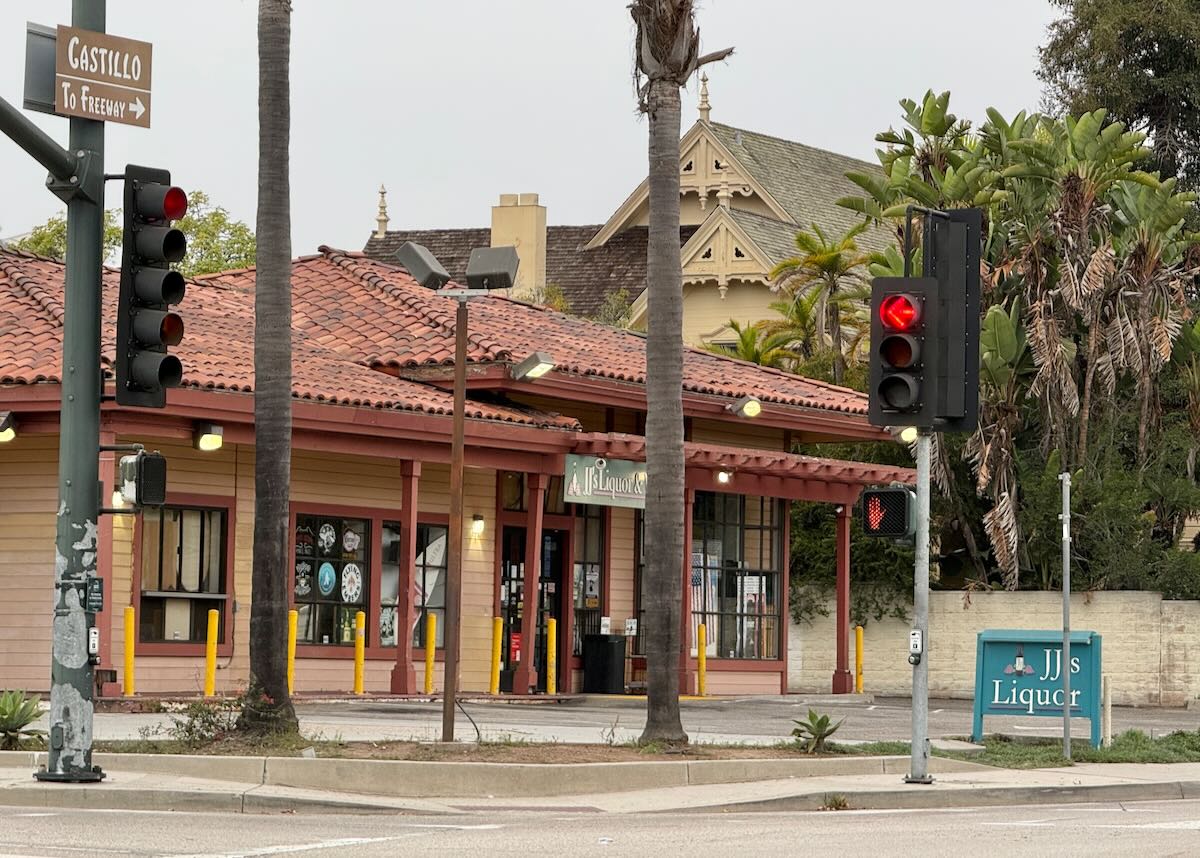

Thank you again Erik! I love your travel reporting.
This was a fantastic article with great photos. Wow.
Ditto the other two comments. Wonderful to see this country! Thanks!
Great read as always! My parents are in Portugal and enjoyed the article also. They report that you are spot on about the sidewalks.
Beautiful photos and I appreciated your observations. We were in Portugal this past winter and this brought back memories, while reminding me how much more there is to see! The one observation I’d disagree with is the coffee. I didn’t love the tiny cups with strong brew at first but after nearly a month drinking it, I found the large American cups I returned to nearly impalatable.
We will be in Portugal starting in Madera then Lisbon and don’t have any destinations in Portugal after that so your article is perfect. I’m thinking about following your footsteps, so I’m wondering what you would leave off next time and where you would add on extra time we have 2 1/2 weeks to spend in Portugal. We will start at the end of April through the middle of May 2023.
Well, it’s a bit tricky because I really, really loved the bluff walk in the Algarve, and the Farmhouse of the Palms is an exceedingly well-run inn, but the rest of the Algarve trends touristy. I’m more drawn to rural areas like the Alentejo, if you can find somewhere to stay—I still kick myself for missing that wine bunker. I’d definitely return to the Douro, and in particular that hotel, but I think I’d use it as a chance to loll; I’m not really into wine/port tasting (more of a drink-with-dinner guy) and I would’ve welcomed a break from the driving and exploring. And I can’t recommend Monsanto enough, if you’re willing to do a lot of walking uphill, but you wouldn’t want to spend more than a few hours there. And I thought Porto was prettier than Lisbon, but we probably spent one day too many there. I’m not sure I’m answering your question. I do recall that, afterward, we felt like the rhythm was wrong: we were either driving between destinations or driving in an area to explore it, and that grew tiresome. So maybe plan on a day here and there where you don’t feel pressure to do anything.
Great photographs and writing. Thanks for the “overly-touristed” alerts; I’ve never seen a great place that wasn’t made disappointing by virtue of shoulder-to-shoulder tourists (yes, I know I’m occasionally one of them) and is why I/we try to travel to less popular places or at least off-season (if there is such a thing anymore).